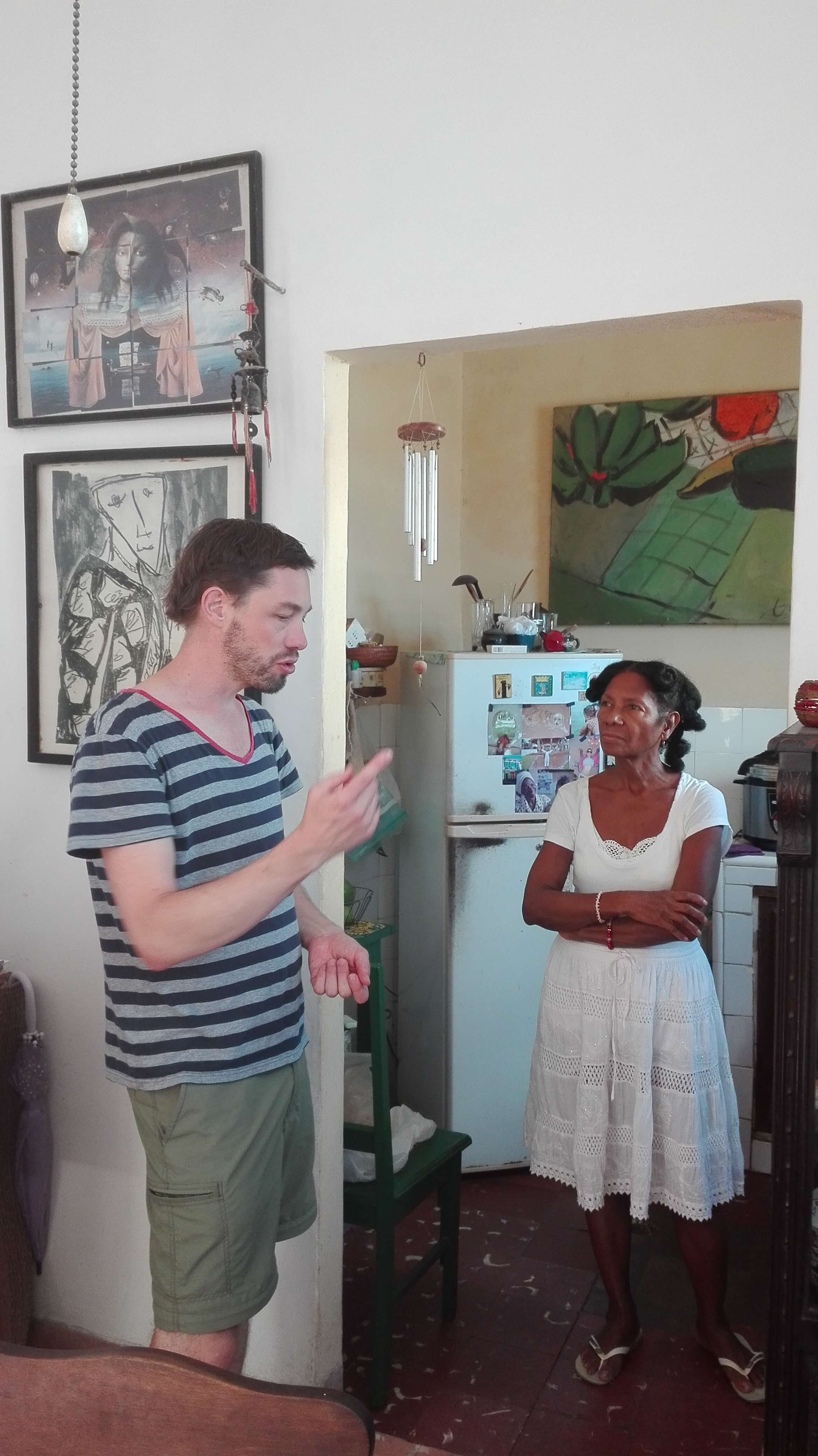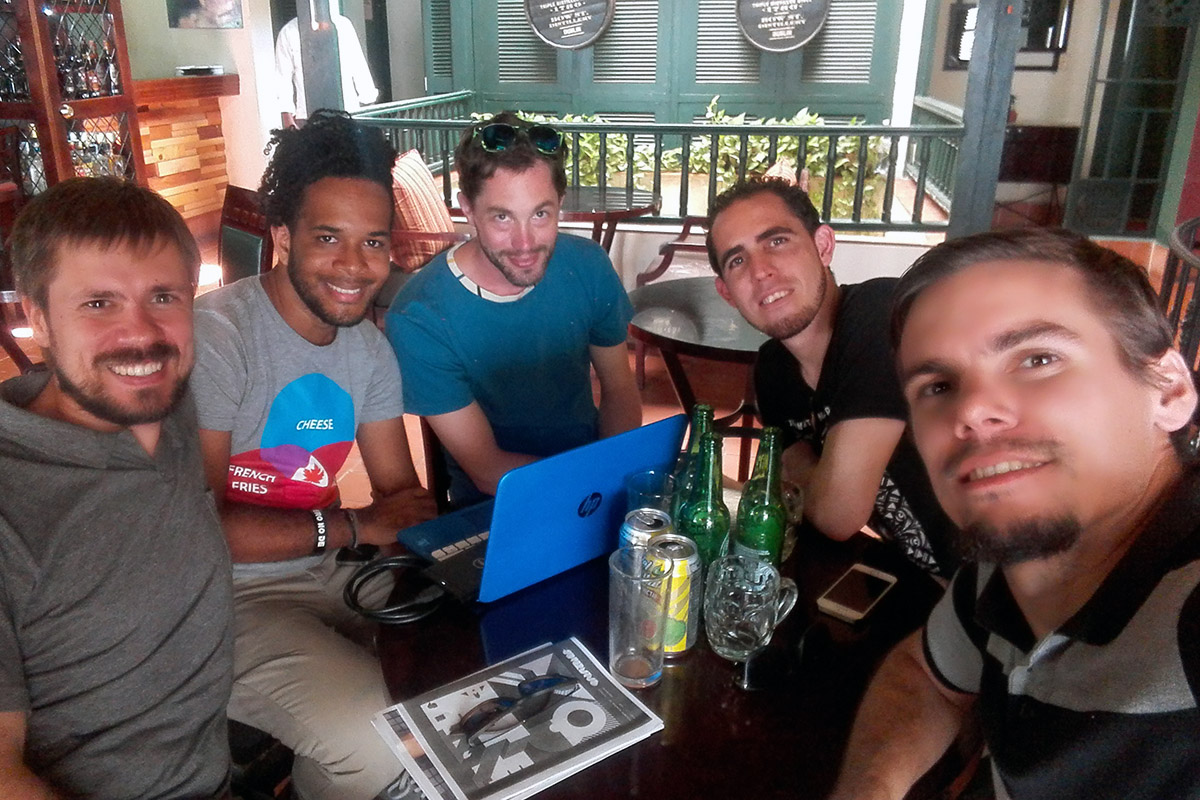Writing
as well as publishing, speaking and teaching
Neuer Kunstverein Wien, Juni 2023
Die außergewöhnliche internationale Kunstzeitschrift (www.ztscrpt.net), die 2002 im Umfeld der Wiener Akademie der Bildenden Künste gegründet wurde, hat mit jeder ihrer bisher 38 veröffentlichten Ausgaben die Schriftart gewechselt und den Namen der Schriftart als Titel verwendet. Anlässlich ihres 20jährigen Bestehens begeht nun das Redaktionsteam um die in Wien und Berlin lebenden Künstler:innen Christian Egger, Christian Kosmas Mayer, Yves Mettler, Magda Stützer-Tóthová, und Alexander Wolff dieses besondere Jubiläum mit der Ausstellung "Hallo, LiebeRuth, Fragen - Déjà Vu? Abonnement inconnu!" im Neuer Kunstverein Wien.
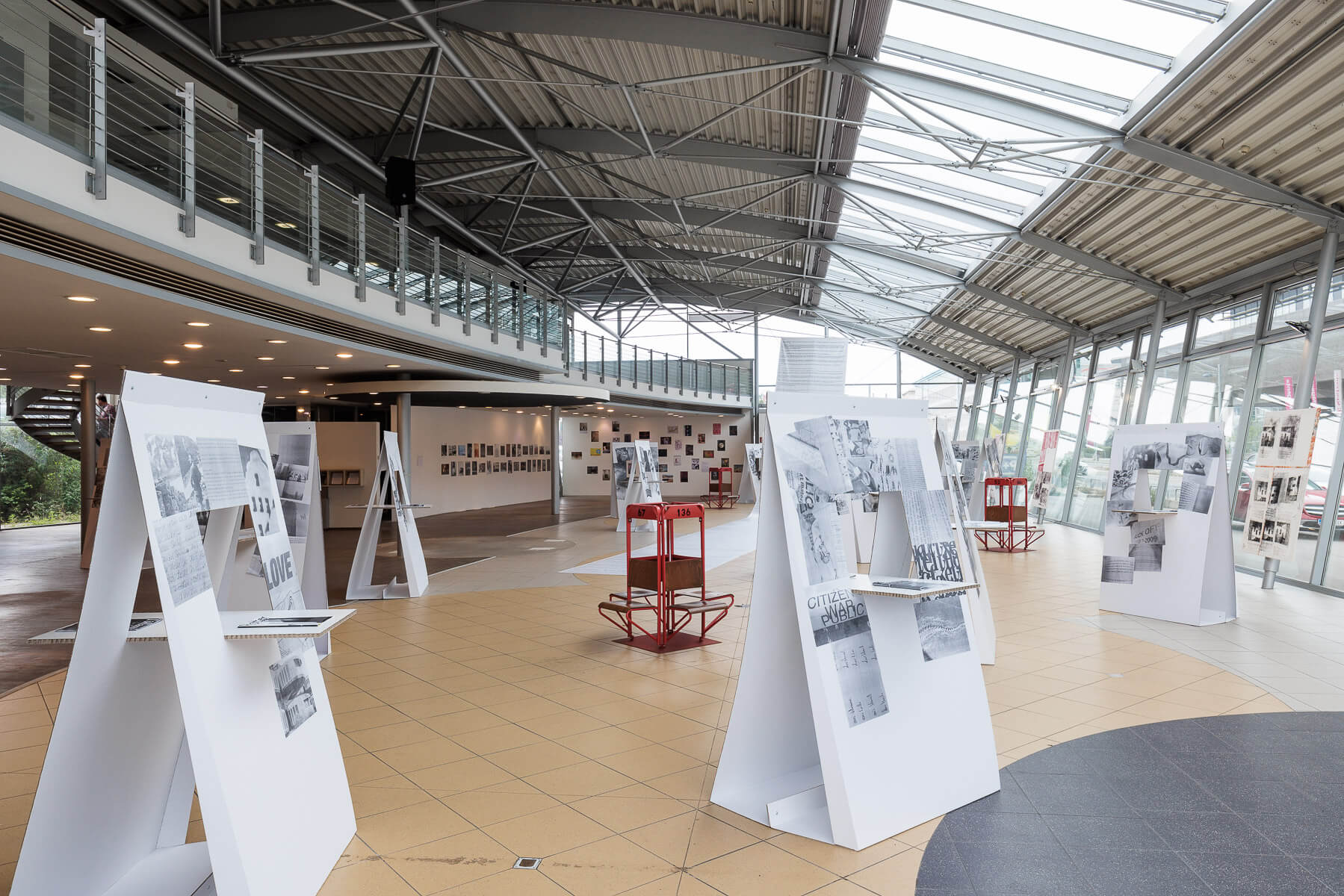
Um diese langjährige Praxis des künstlerischen Publizierens in ein konkretes Ausstellungsformat zu übersetzen, betrachten die Künstler:innen vergangene Ausgaben der Zeitschrift, ihre kuratorischen Projekte und performativen Aufführungen als Speicher, aus dem Elemente und Details extrahiert und in aktuelle Zusammenhänge gesetzt werden. Durch diese Herangehensweise veranschaulichen sie nicht nur Höhepunkte und Entwicklungen ihrer Kollaboration, sondern auch mediale Brüche und Veränderungen, die im Laufe der Zeit stattgefunden haben. Die Ausstellung bietet somit aufschlussreiche Einblicke in das Projekt sowie dessen Antriebsmomente, die geprägt sind von einem Glauben an die Vielfalt, Koexistenz und Wirkmacht der künstlerischen Mittel in der Beschreibung, Dokumentation und Verbesserung unserer Welt und ihrer Bewohner:innen. Der Ausstellungsraum wird dabei zum begehbaren Layout, zur großen Redaktionskulisse und zum temporären Laboratorium für dieses Projekt, das vor allem auf Freundschaft und Neugier basiert.
Neben der Präsentation aller bisherigen Ausgaben wird während dieser Ausstellung auch eine neue Ausgabe mit dem Titel „LiebeRuth“ produziert, die im September 2023 im NWK präsentiert wird. Der Release der neuen Ausgabe ist ein Programmpunkt im Rahmenprogramm der Ausstellung, das auch Performances, Konzerte und Screenings beinhalten wird.
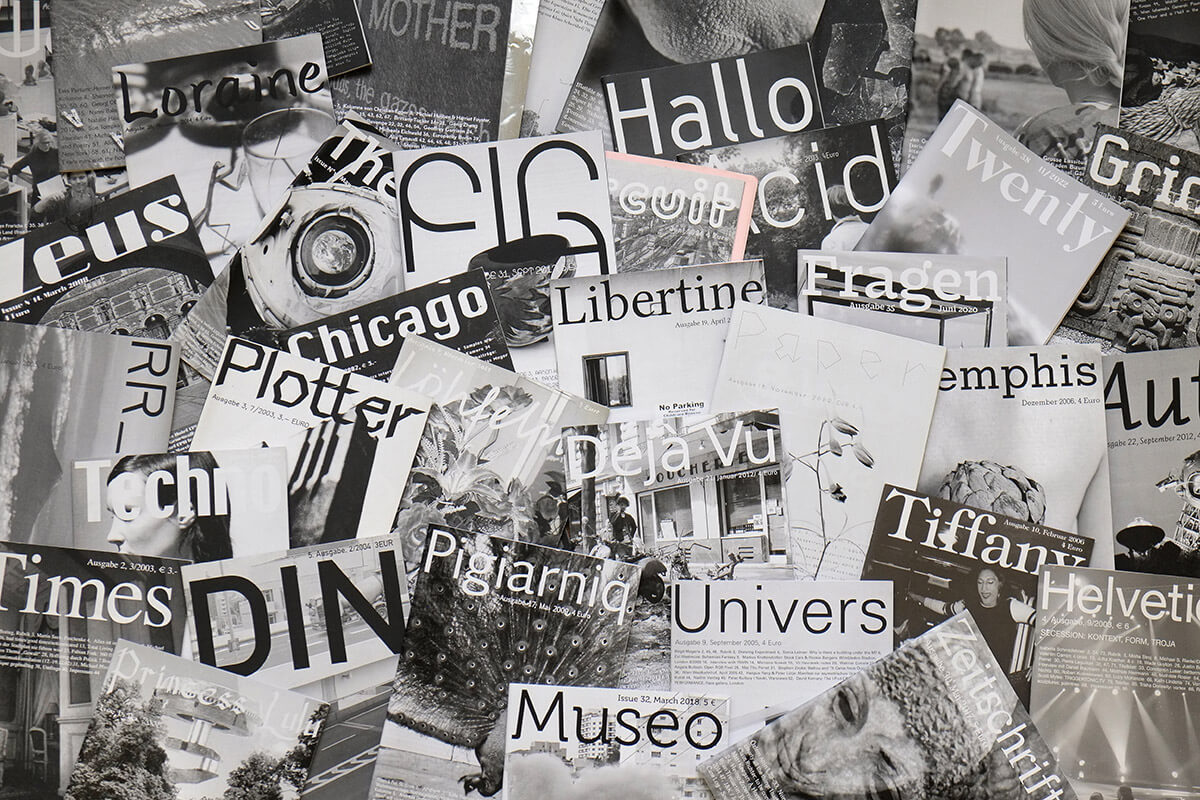
Hochschule der Künste Bern, Toolbox, Y-Institut, April 2023
Während die Idee der Welt als Verflechtung von ineinandergreifender Öffentlichkeiten gedeiht, wird gleichzeitig vermehrt von Spaltung, Ausgrenzung und Einschränkung gesprochen. Mit der Entwicklung der Digitalisierung, dem Klimawandel, der Migration, und zuletzt der Pandemie, verschieben und verschärfen sich die Verhältnisse zur Öffentlichkeit. Es entsteht für die Öffentlichkeit neue Räume, während andere sich verändern, verschieben oder verschwinden.
Durch die Verbreitung demokratischer Werte im 20. Jhdt. haben Künstler*innen zunehmend ihre Stimme und vielfältiges künstlerisches Handeln eingesetzt, um die Öffentlichkeit(en) zu beschreiben und gestalten. Damit sind künstlerische Praxen oft an der Schnittstelle von individuelle oder kollektive Subjektivität und Öffentlichkeit.
In diesem Workshop geht es darum, sich den Begriff von Öffentlichkeit(en) anzueignen, und öffentlichen Räumen unterschiedlicher Natur, von der Bushaltestelle zum Gerichtsaal, vom Mall zur Stadtbibliothek, und vom Museum zur Bar, zu erkunden: was für Öffentlichkeit(en) sind da vorhanden, woran erkennt man sie, wie werden sie bestimmt? Das Ziel ist eine theoretische und kunstgeschichtliche Übersicht zu geben und den Zugang zur Öffentlichkeit in der eigenen künstlerischen Praxis zu reflektieren.
Der Workshop ist für alle Fachbereiche offen und findet auf Deutsch statt. Erläuterungen auf Englisch oder Französisch sind möglich. Einige Texte die wir zusammen lesen werden sind auf Englisch. Tägliche Treffen ausserhalb der Schule sind nach Möglichkeit vorgesehen.
Cashmere Radio, Berlin, February 2023
Between 2018 and 2019 the project On the Border of EuropaCity has organised public walks, workshops and an intervention in and around the Europacity in Berlin Mitte. Bringing neighbors and specialists into dialogue with the new urban landscape by means of collective listening, the project draws attention to the ongoing local/global developments and addresses questions of Europe, city planning, cultural spaces and community.
Link to the archived talk (in english)
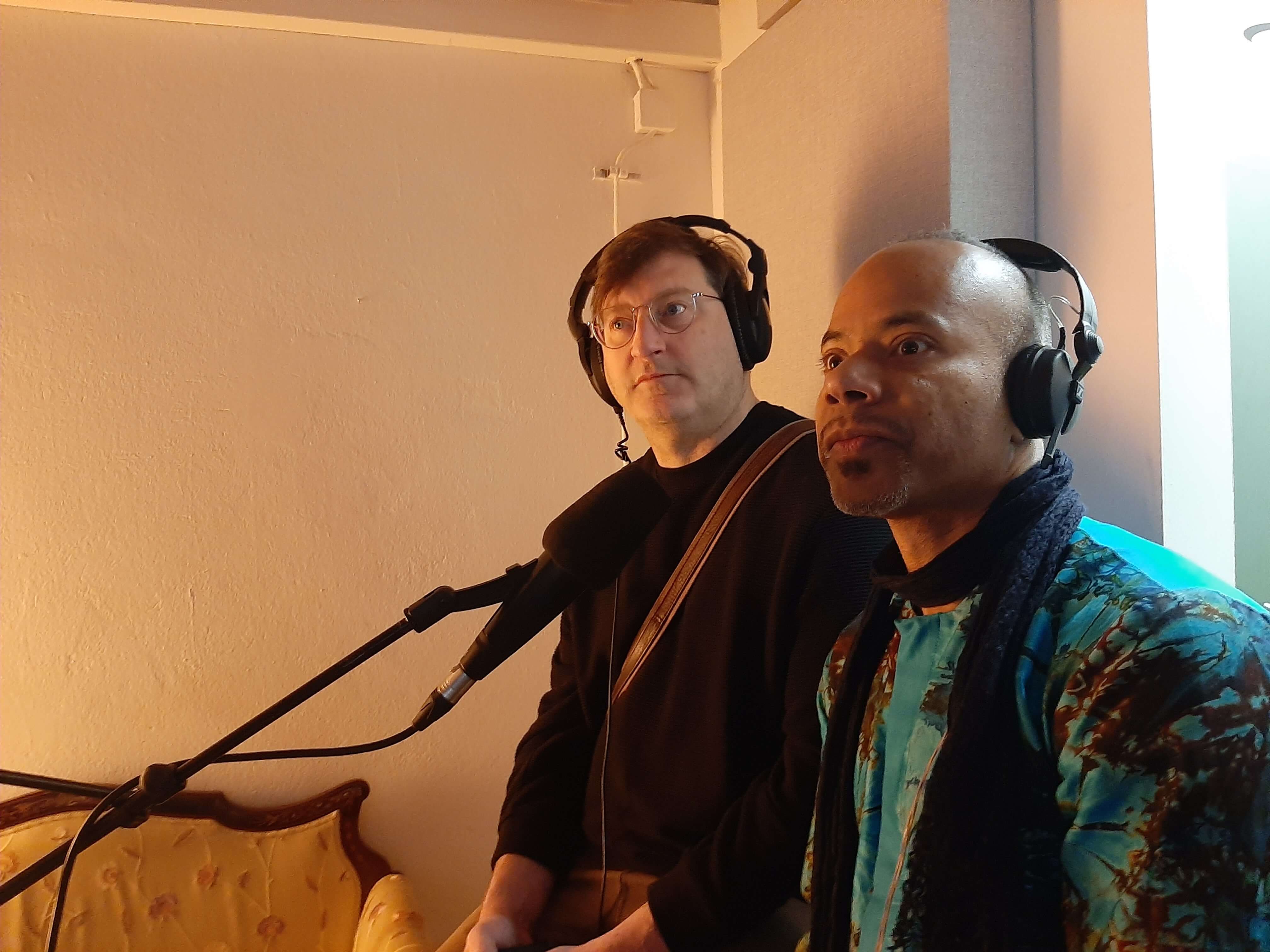
Together with urban designer Mandu Dos Santos Pinto we talk about the further implications of the Europacity on the people in Wedding and Moabit and, the next steps for the project towards a more inclusive understanding of urban resilience.
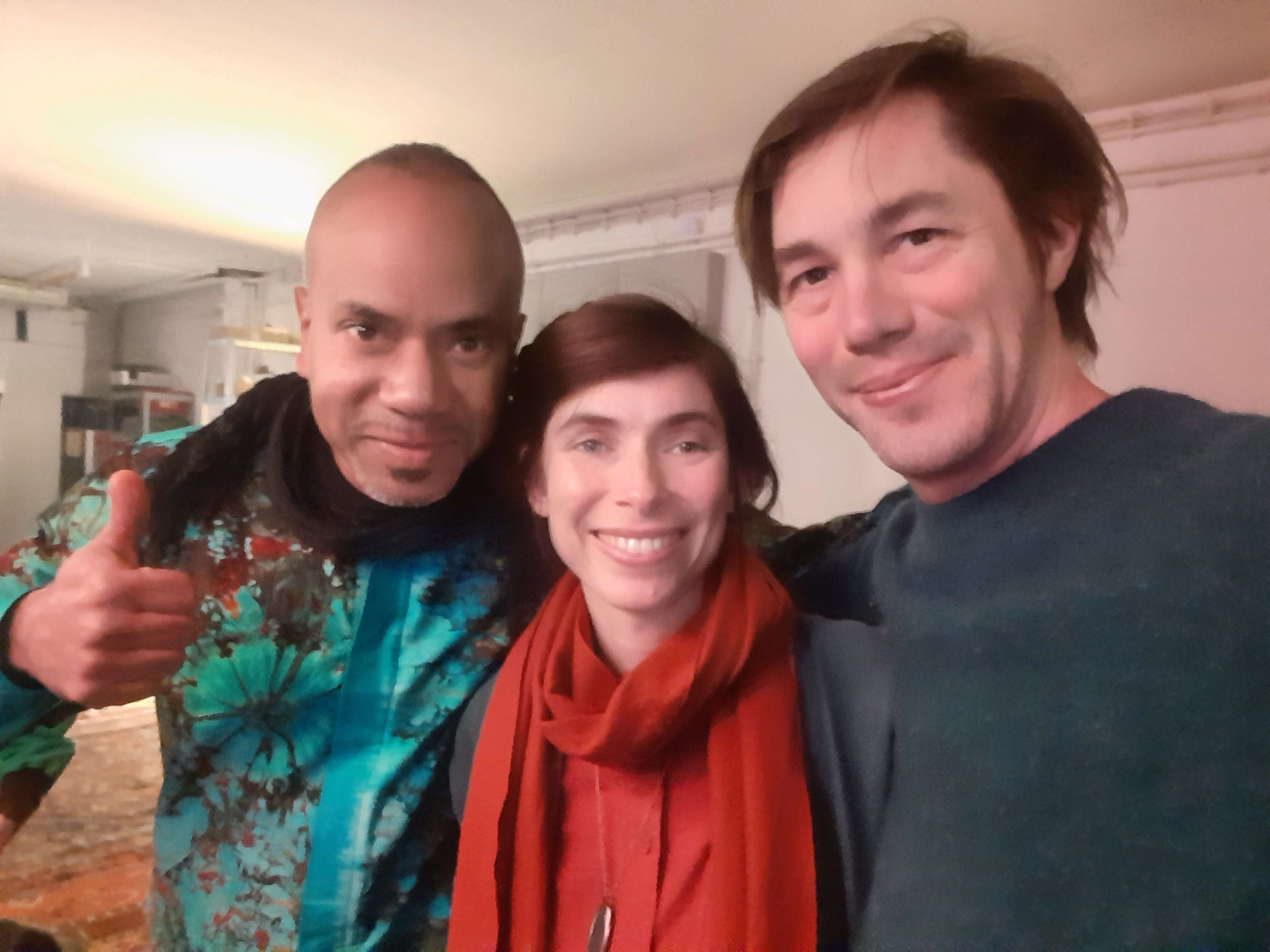
KulturFabrik Moabit, Berlin, September 2022
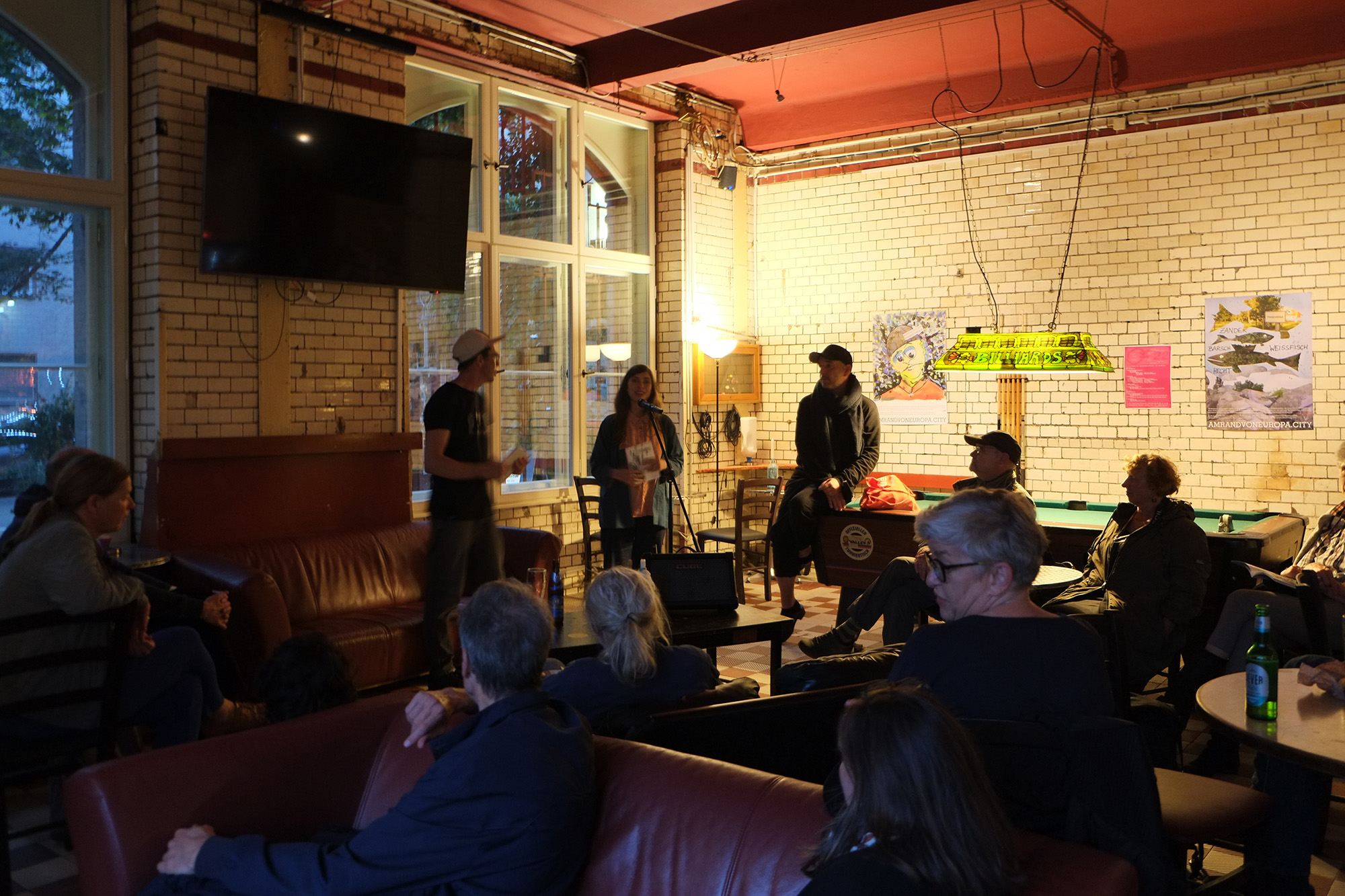
Release of the #9 of the Berliner Hefte zu Geschicht und Gegenwart der Stadt presenting our project Am Rand von Europacity with four texts and many pictures: A full historical and topographic investigation of the construction of the Europacity, a presentation of our participative project with the neighbours, based on collective listening, a text-collage of what has been said during our walks and a zoom out on more general conceptions of the European construction and it's political economy rooted in its territory by Teresa Pullano.
The book is also available as digital publication.
A series of events will take place following the publication of the book. Full programme on our project website amrandvoneuropa.city.
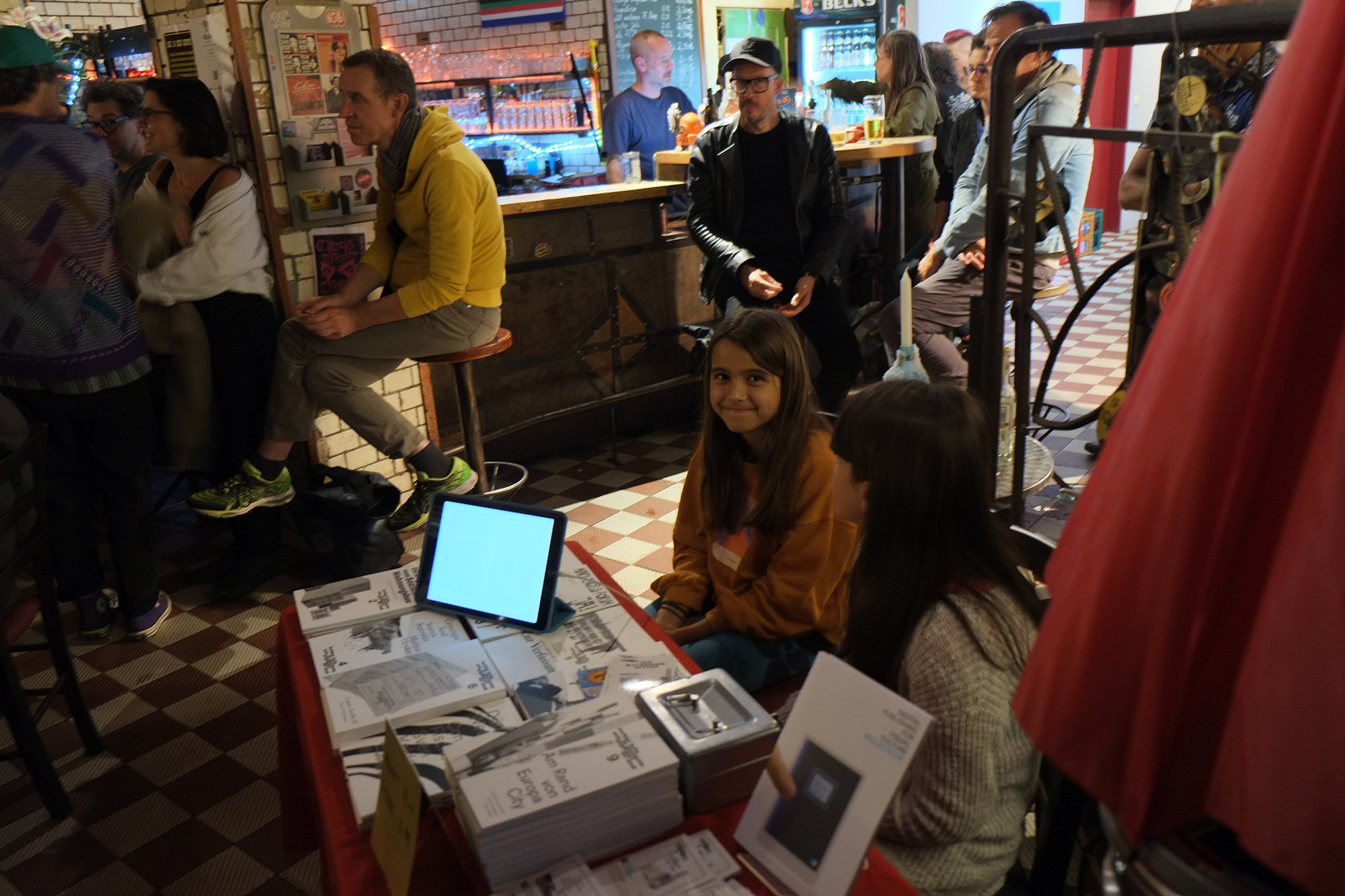
Walk series, Art4all, Hamburger Bahnhof, June-September 2022
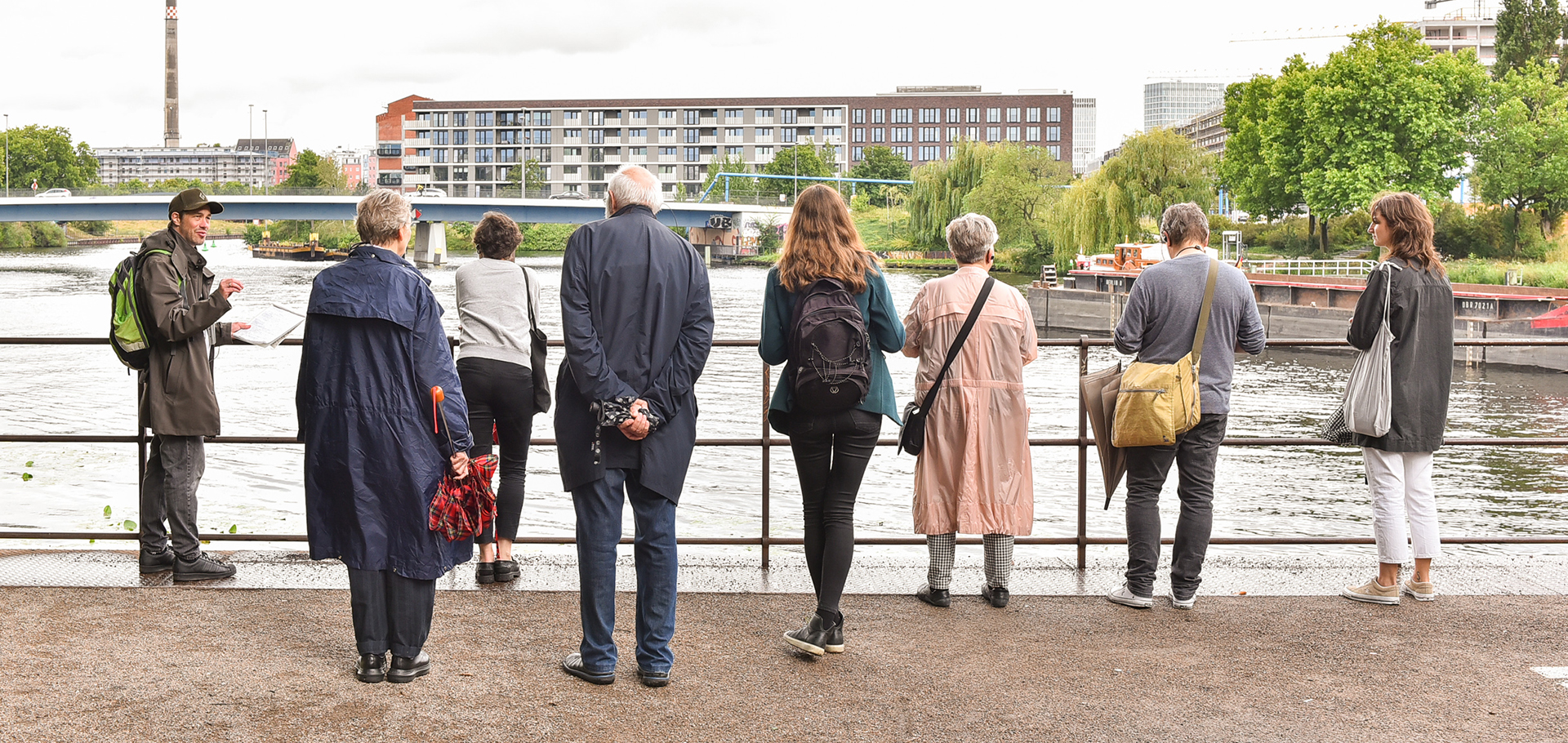
Die Spaziergänge fokussieren auf eine gemeinsame immersive Erfahrung durch die entstehende und bestehende Nachbarschaften rund um das Museum. Es werden sowohl Informationen und Geschichten durch Inputs von begleitende Expert*innen vermittelt, wie auch Aktionen initiiert, die die eigene Wahrnehmung der Orte und das eigene Erlebnis schärfen. Die Spaziergänge funktionieren unabhängig voneinander, ergänzen sich jedoch, um ein Panorama der vorhandene Vielschichtigkeit wiederzugeben.
Auf Besuch bei der stille Nachbarin: Die Europacity
Der Spaziergang führt durch der unmittelbare Umgebung vom Hamburger Bahnhof. Den Räumlichkeiten und Fassaden vom neuen quasi lautlos entstandenen Stadtteil statten wir einen neugierigen Besuch ab. Zurückschauend auf die Ausgangspunkte der Planung und die Intentionen dessen Akteuren, versuchen wir abzulesen, wie die neue Umgebung das Museum verschiebt. Allgemeine städtepolitische Fragen nach Gestaltung und Kreativität, von Privateigentum und Öffentlichkeit, Planung und Entscheidung, Erwartung und Absicherung werden zusammen angesprochen.
Wellenritt durch das Bahnhof Archipel
Seit seiner Entstehung hat sich der Grund unterm Hamburger Bahnhof mehrmals verschoben. Jede Verschiebung hat Zeichen, Situationen, Bauten hinterlassen, die heute noch die Umgebung prägen. Das Museum steht inmitten eine dynamische städtische Tektonik. Der Spaziergang wird diese gegenwärtigen, sich aneinander reibenden Platten verbinden und eine Grundlage bieten, um die Rollen des Kunstmuseums dazwischen neu zu finden.
Ist da jemand? Den Echos aus der Kulturlandschaft zuhören
In welcher kultureller Landschaft ist das Museum seit seiner Entstehung hineingewachsen. Auch wenn viele Stimmen abgewandert sind, gibt es einige die die nächstgelegene Wohngebiete in Moabit und Wedding prägen. Zusammen wandernd werden existierende Graben erörtert und mögliche Brückenschläge imaginiert.
photo: Robert Schittko
Centre interdisciplinaire pour la transition des villes et territoires, HETS, Geneva, June 2022
National Youth Palace, Tbilisi, June 2022
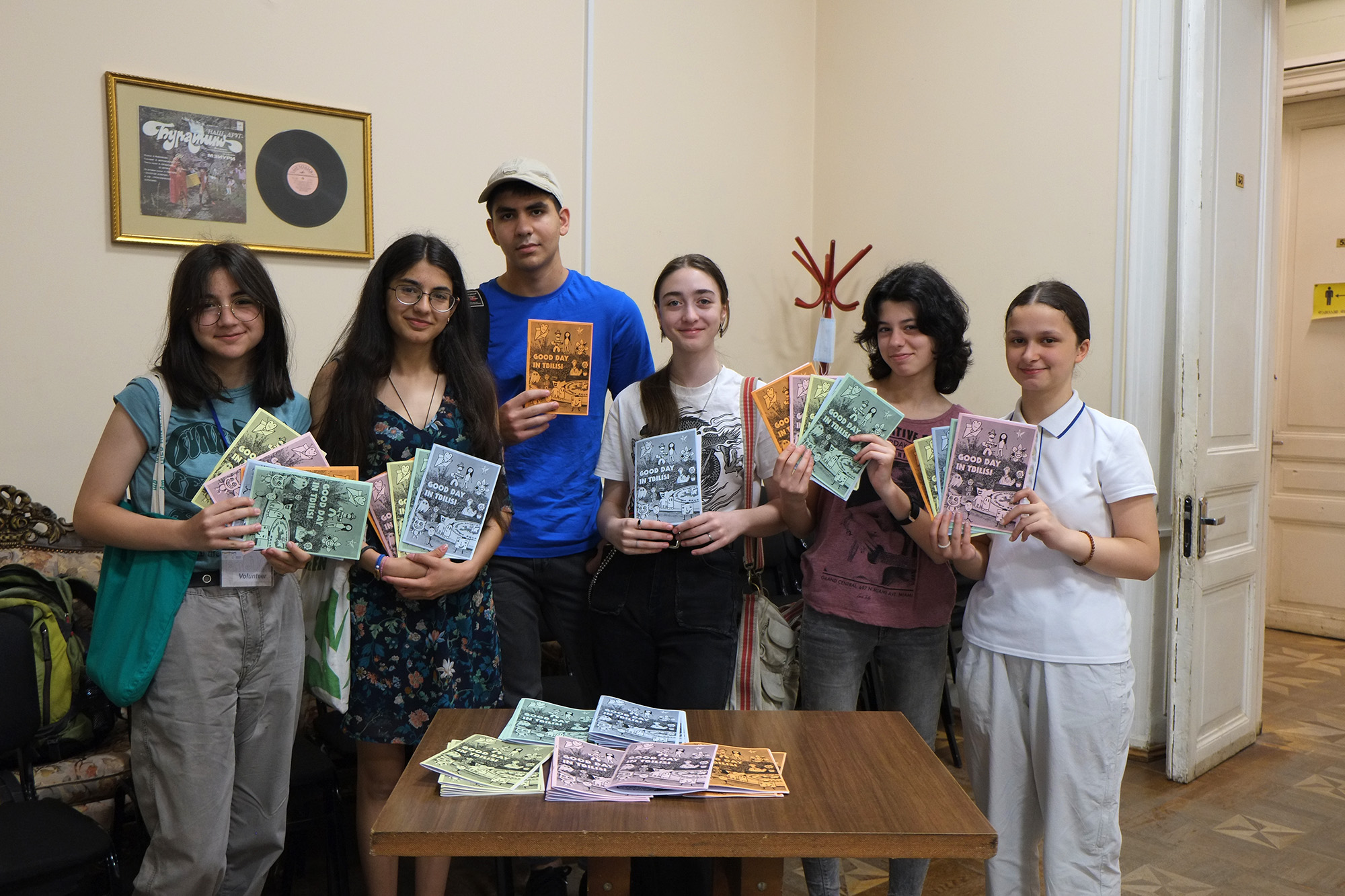
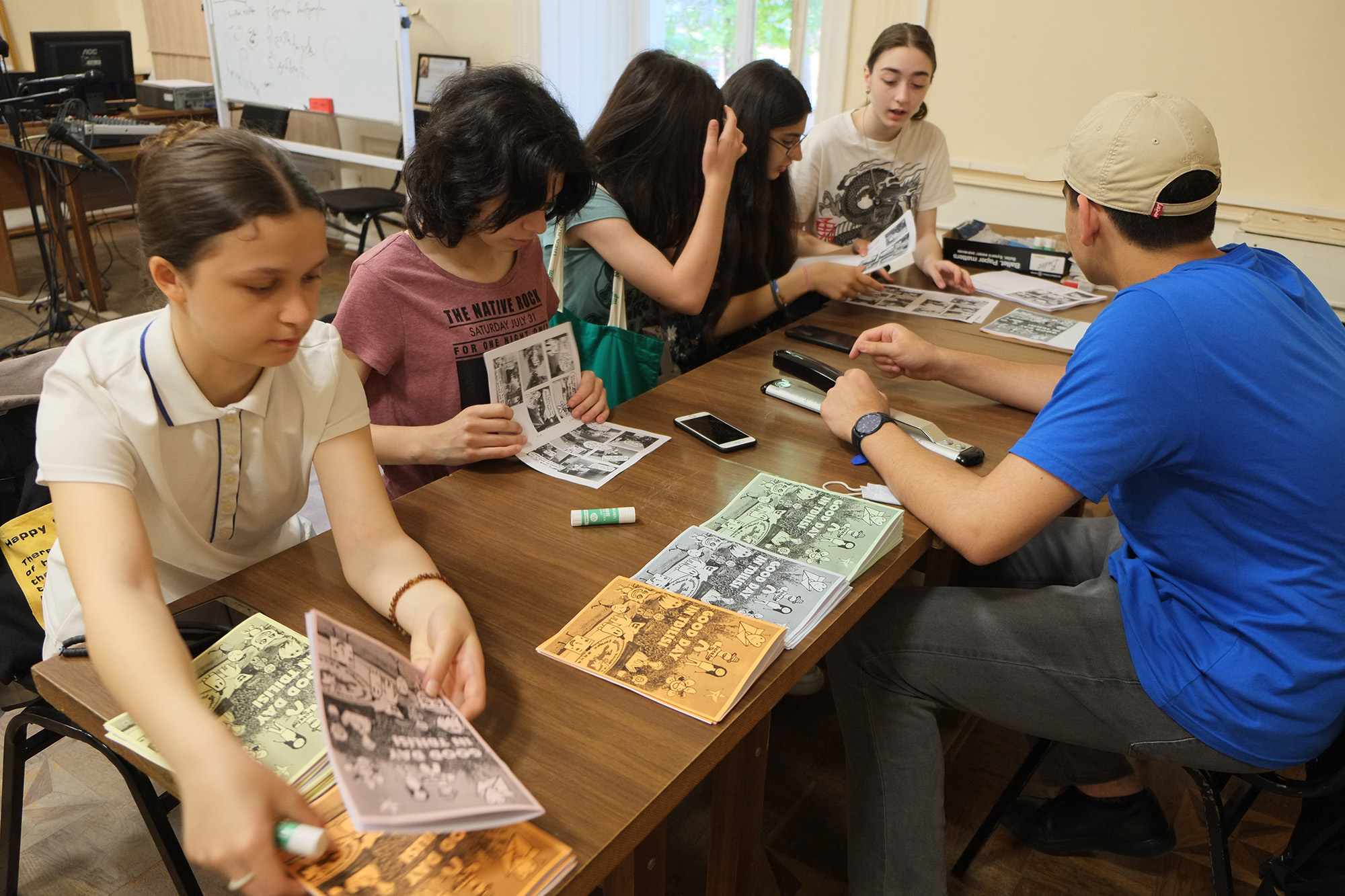
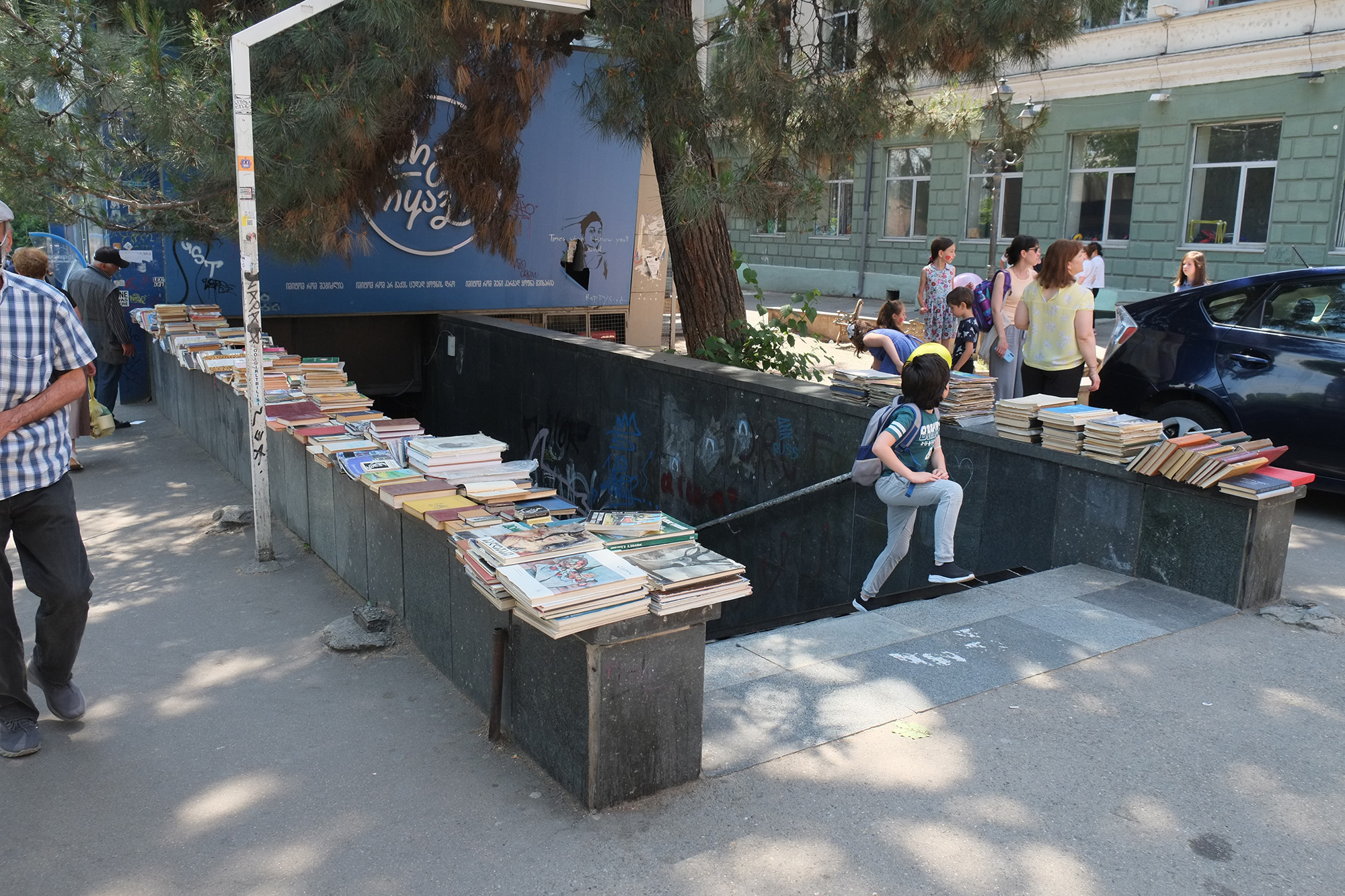
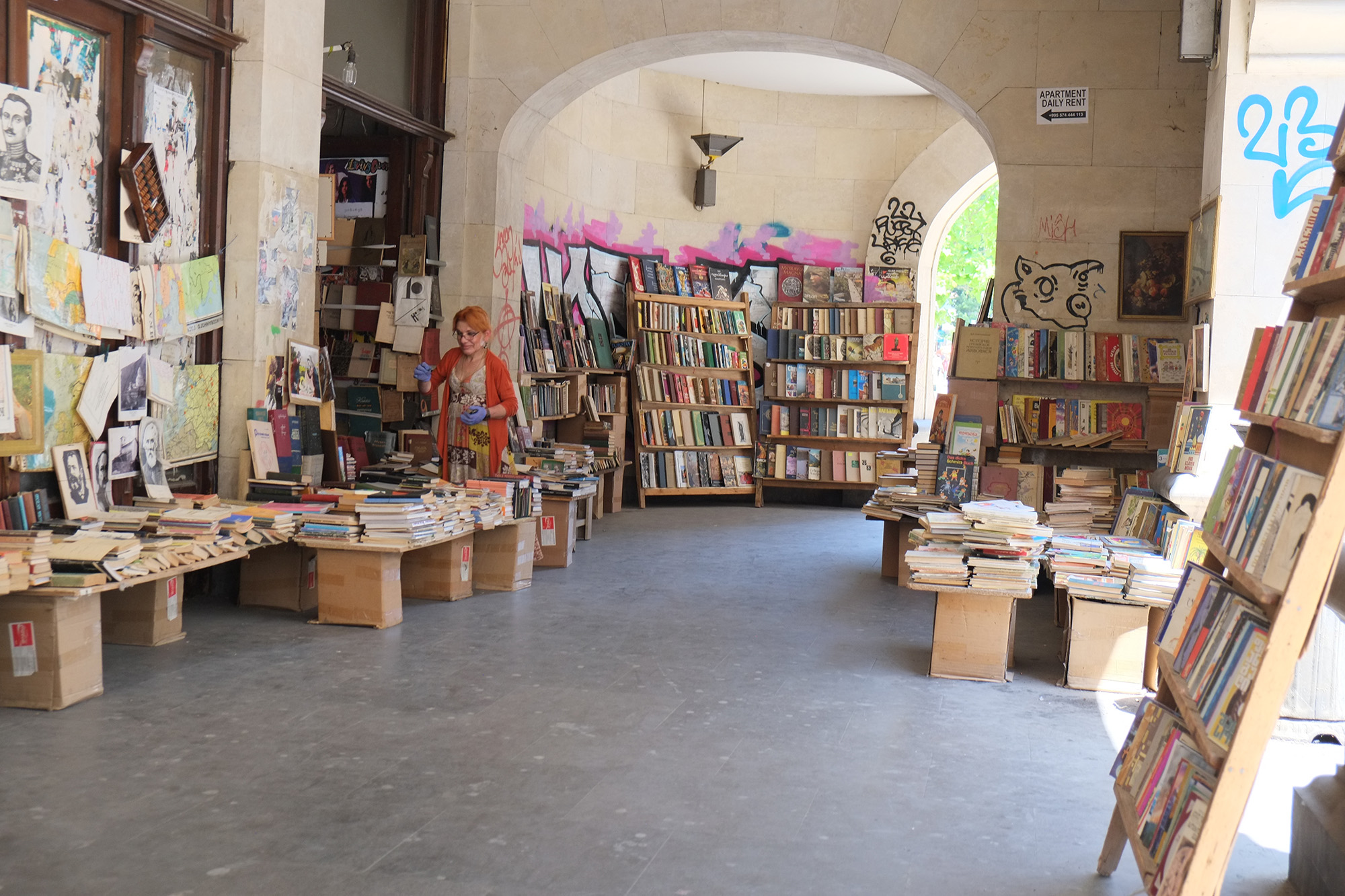
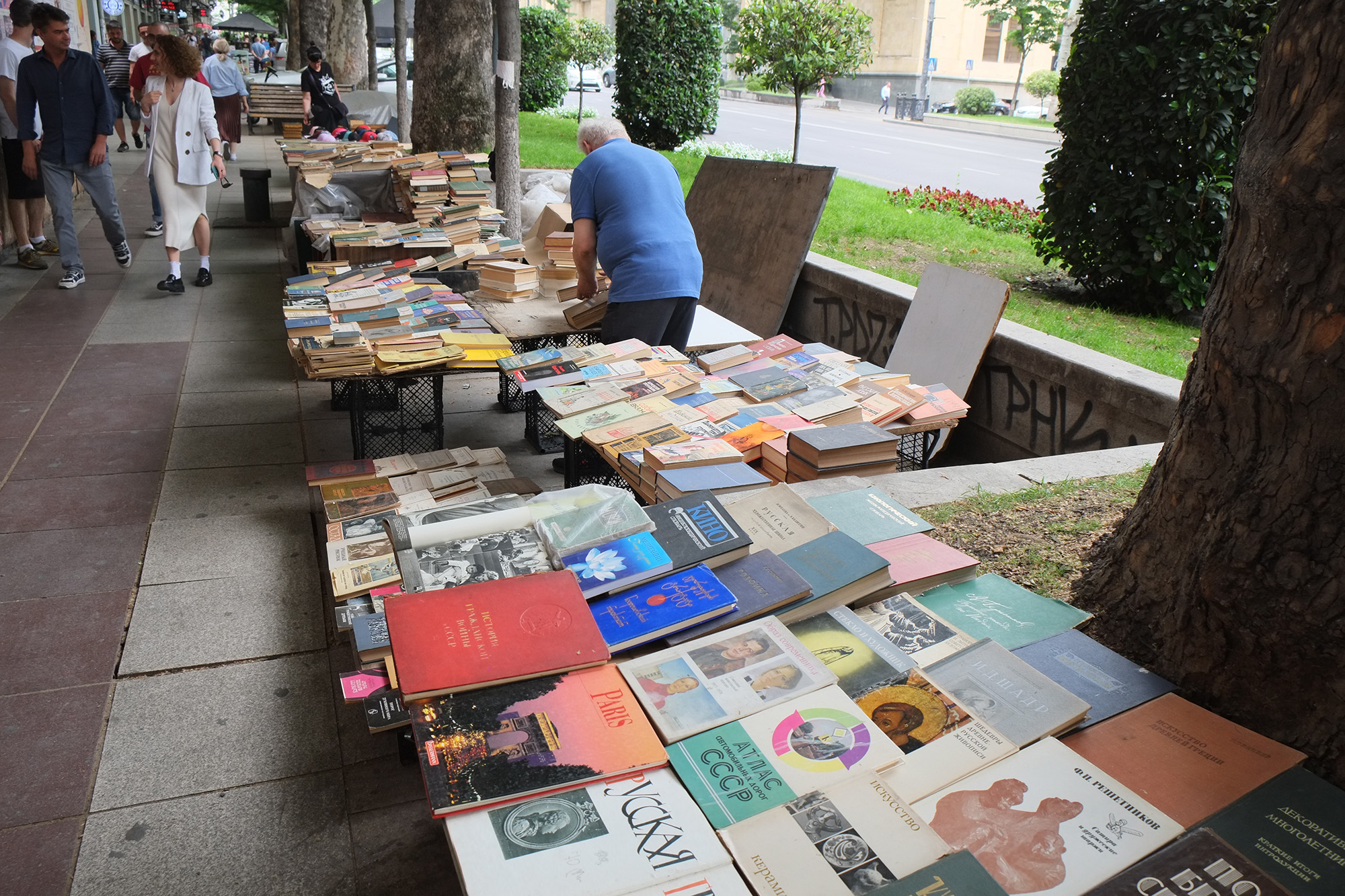
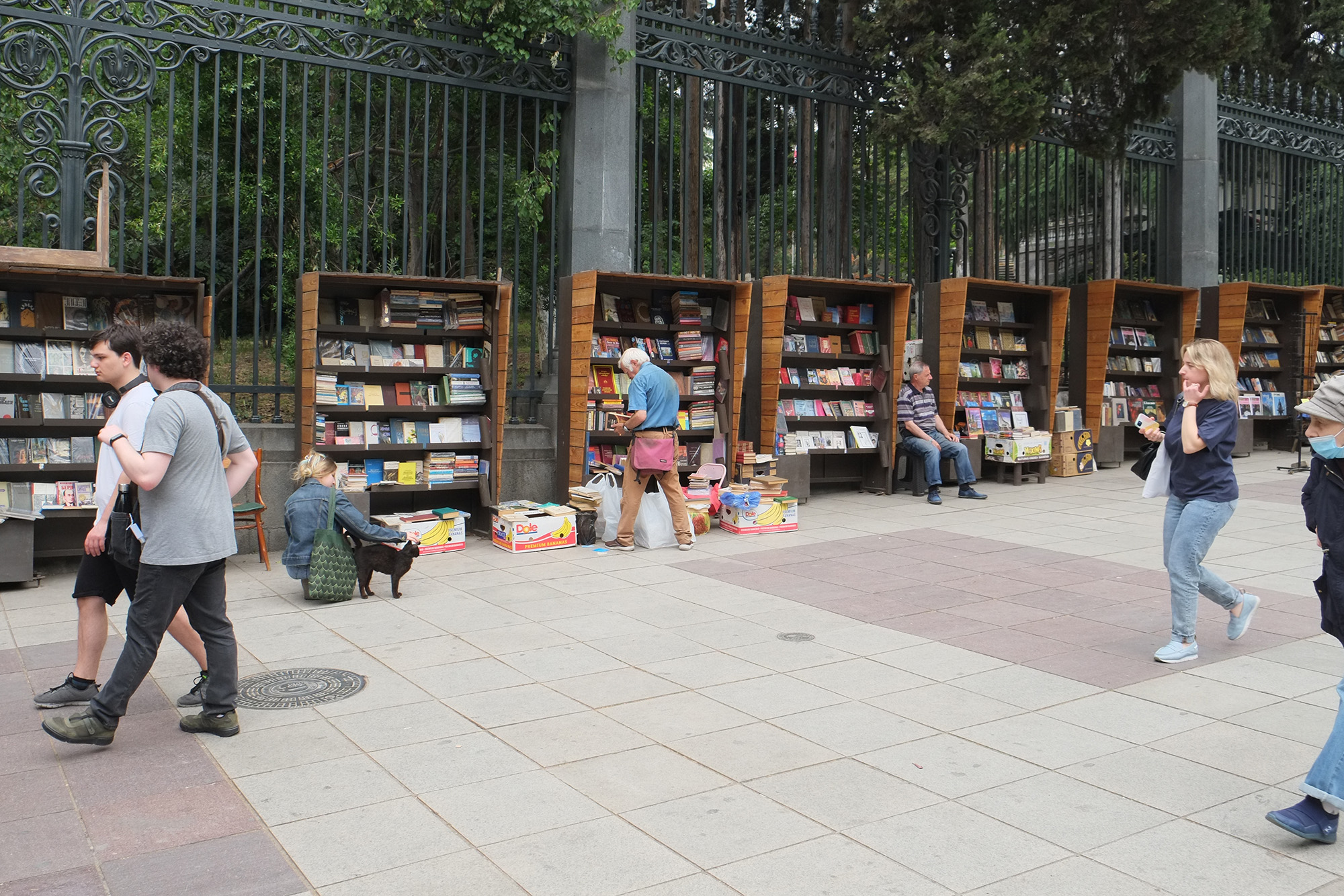
Open Idea Conference, University of applied science, Vorarlberg, April 2022
How is public space controlled and determined? What values are conveyed directly in urban space? And if one understands the city according to Lefebvre as a living social fabric that is constantly changing, how do the overlays and different past, present and projected interests intertwine?
With a travel report about a number of urban squares, existing or projected European squares, in and outside of Europe, individual situations are presented and analyzed. The articulations of abstract values and concrete situations are presented. At its core, it is about the contested entanglement of democratic values and peace in public space. At the same time, I talk about my artistic approach, which has developed over the past 20 years and uses both documentary and interventionist methods.
Theory Show curated by JOKAklubi, Hilbertraum, Berlin, March 2022
The Theory Show opens the floor for theories of any kind. JOKAklubi has invited five surprise guests to choose or come up with a theory, and present it. JOKAklubi is a group of three visual artists Niina Lehtonen Braun, Mirka Raito and Tellervo Kalleinen. JOKAklubi has combined performance, music and visual art since 2009. The Theory Show is part of the 5x5 festival.
Together with Alice Chauchat we performed a convergent reading of our own personal concepts of "exologism" and "togethering"
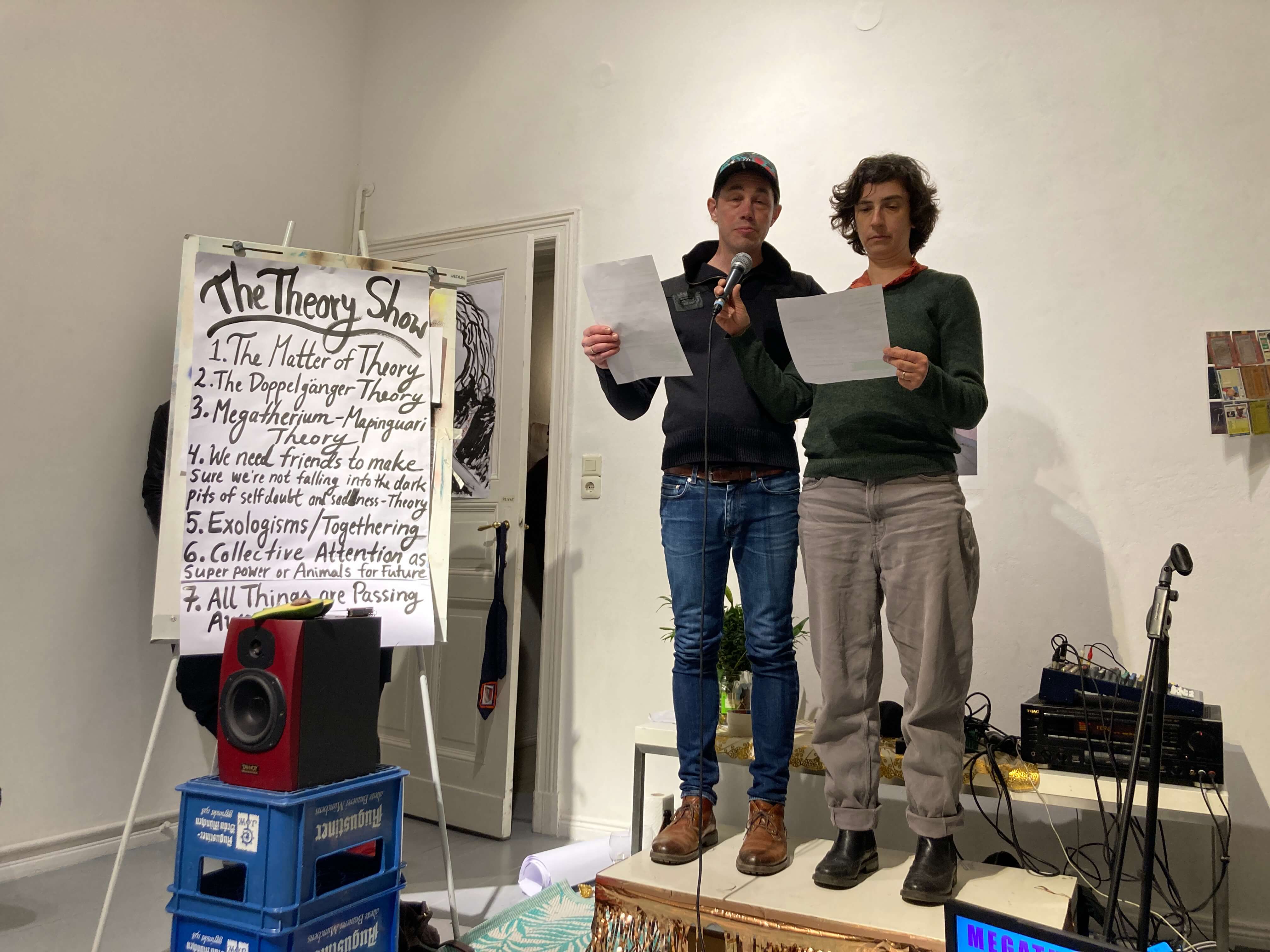
Jüdisches Museum Hohenems, Februar 2022
Eine Diskussionsrunde mit: Markus Schadenbauer (Hohenems), Martin Strele (Bregenz), Yves Mettler (Berlin), Alexis Hyman Wolff (Berlin), Ursula Spannberger (Salzburg), Elisa Rosegger (Hohenems); Moderation: Verena Konrad (Dornbirn).
Die Beteiligung verschiedener Nutzer*innengruppen an Entscheidungsprozessen knüpft sich immer auch an Fragen nach Erwartungen, Möglichkeiten und Engagement.
Exhibition and Talk, Kaunas Biennal, November 2021
The final event of the MagiC Carpet program MagiC Carpets Landed exhibited the installation and the zine previously made in Rome in the Kaunas Picture gallery. It was also an amazing event to meet all the people from for once literally all over Europe engaged in the project – It was a burst of joy after all these confined days and months.
Starting from the Europe Square in Vilnius, inaugurated the night when Lithuania joined the E.U., I had the opportunity to expand my presentation of Europe squares with a focus of places in non-E.U. countries, among other Kiev, during the symposium "Co-creation in public space". Meanwhile the coloured bars gently waved on the Liberty avenue. (Photo: G. Zaltauskaite)
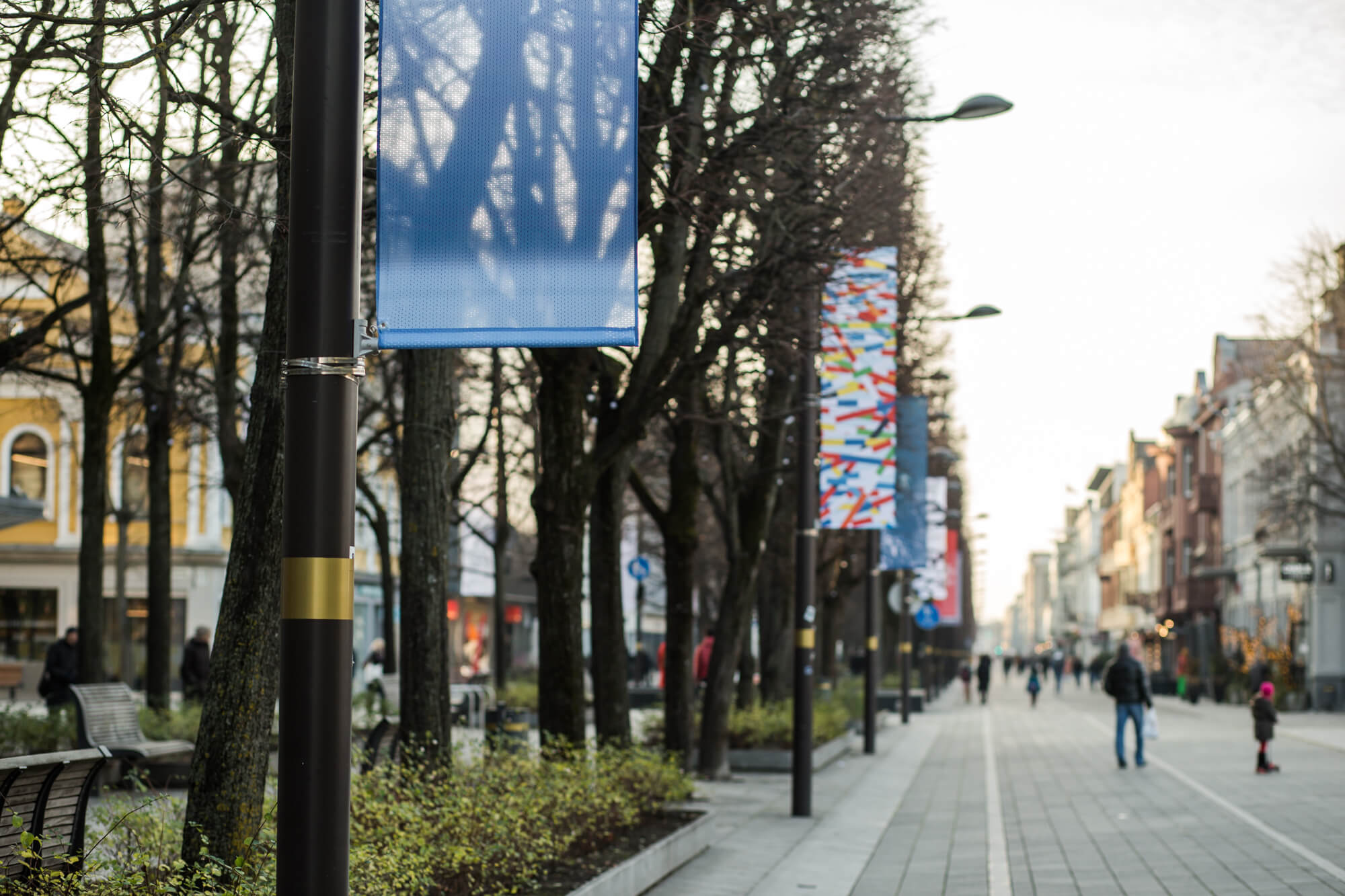
Zentrum für Aktuelle Kunst, October 2021
The show presents the invited entries of three Kunst-am-Bau competition in Spandau. My proposal for the Walter-Borchertschule expanded on the presence of bat colonies in artificial shelters in the courtyard of the school. The main object is a human-sized bat shelter in light-concrete, like the orginal shelters, and the inside is rippled like the ears of a bat, which works the same way as lighthous lenses, thus building a parallel on seeing and listening as modes of exploring the world. The food tablets of the canteen are engraved with extracts from a fictional conference for the bats, serving as conversational basis for the users of the canteen.
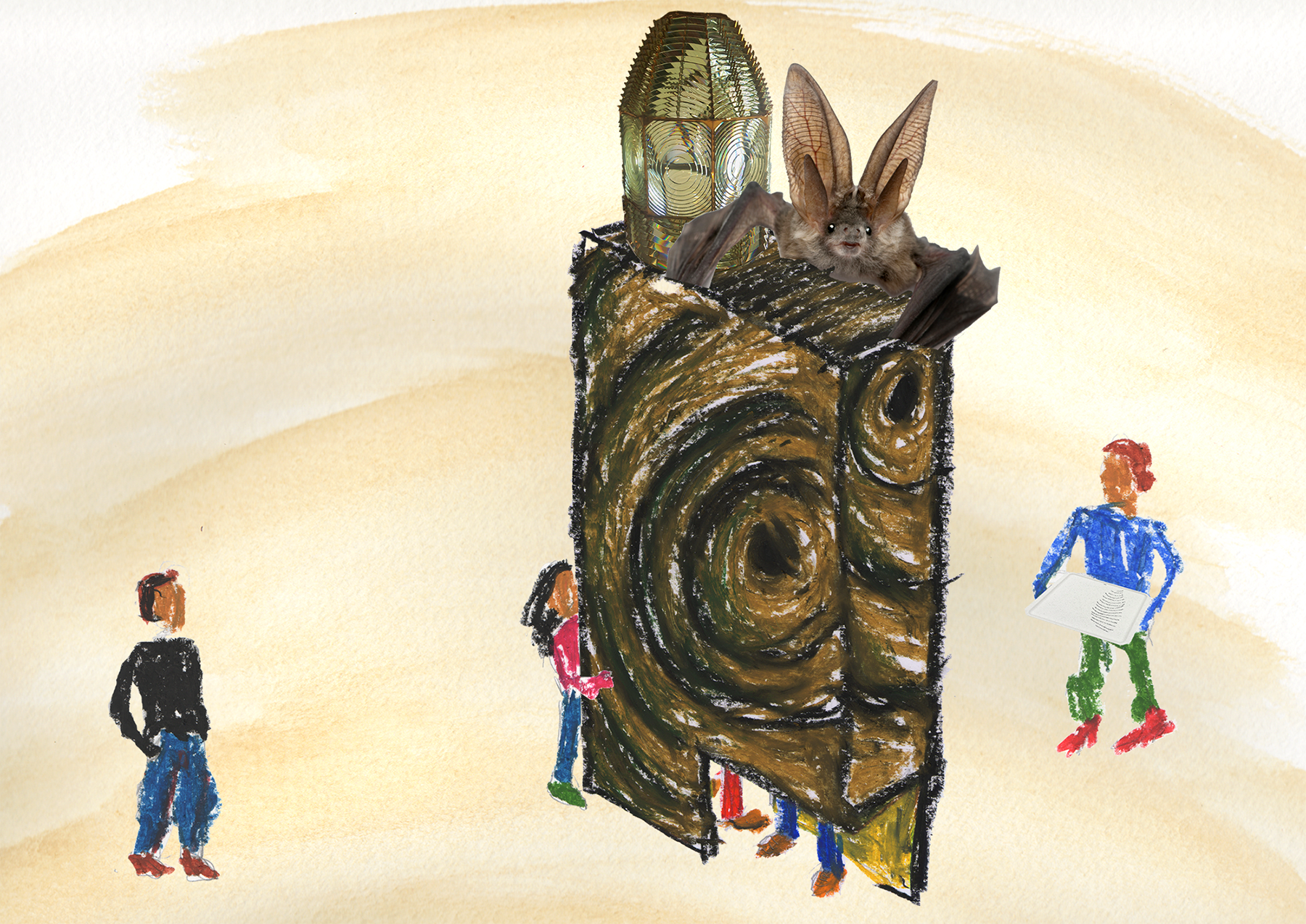
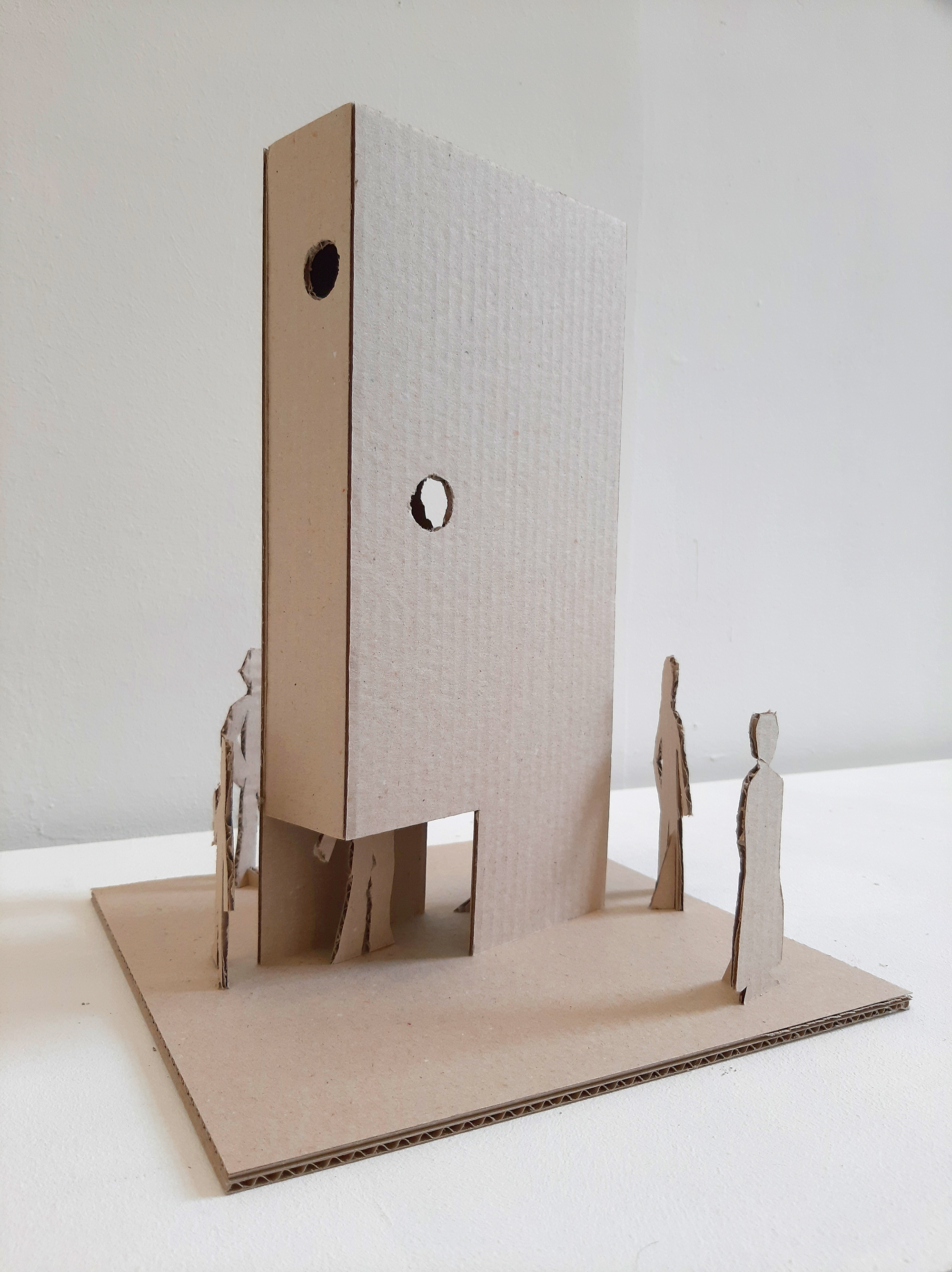
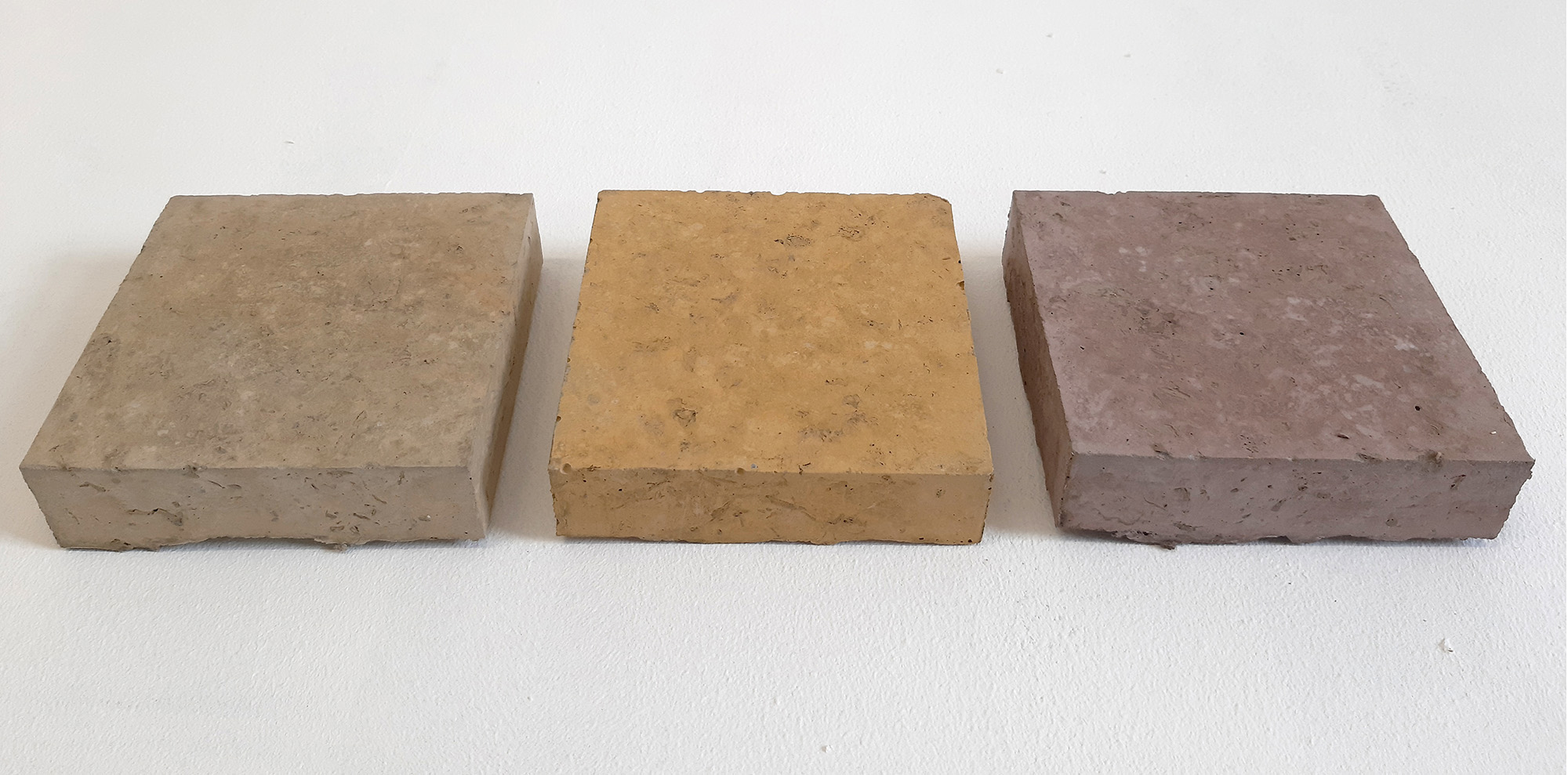
Prendre part à l’intervention artistique urbaine. Multiples engagements et appropriations : pour quelle figuration?
Workshop together with Laurent Thévenot (EHESS) and Luca Pattaroni (EPFL), urban festival EXPLORE, October 2021
The workshop proposes to reflect with the participants on the tensions inherent in urban artistic interventions involving participatory engagement. Often overlooked, these tensions weigh heavily on the artistic and political outcome of these interventions.
By crossing an experience conducted in the Parisian suburbs (Bobigny) by sociologist Laurent Thévenot and artist Yves Mettler with the intervention carried out or in progress in the Parc de la Jonction in Geneva, three major questions will be addressed together with one of the architects engaged in the project in the light of the difficulties encountered and the original answers provided by the experience.
Exhibition, Haus der Statistik, Berlin, June 2021
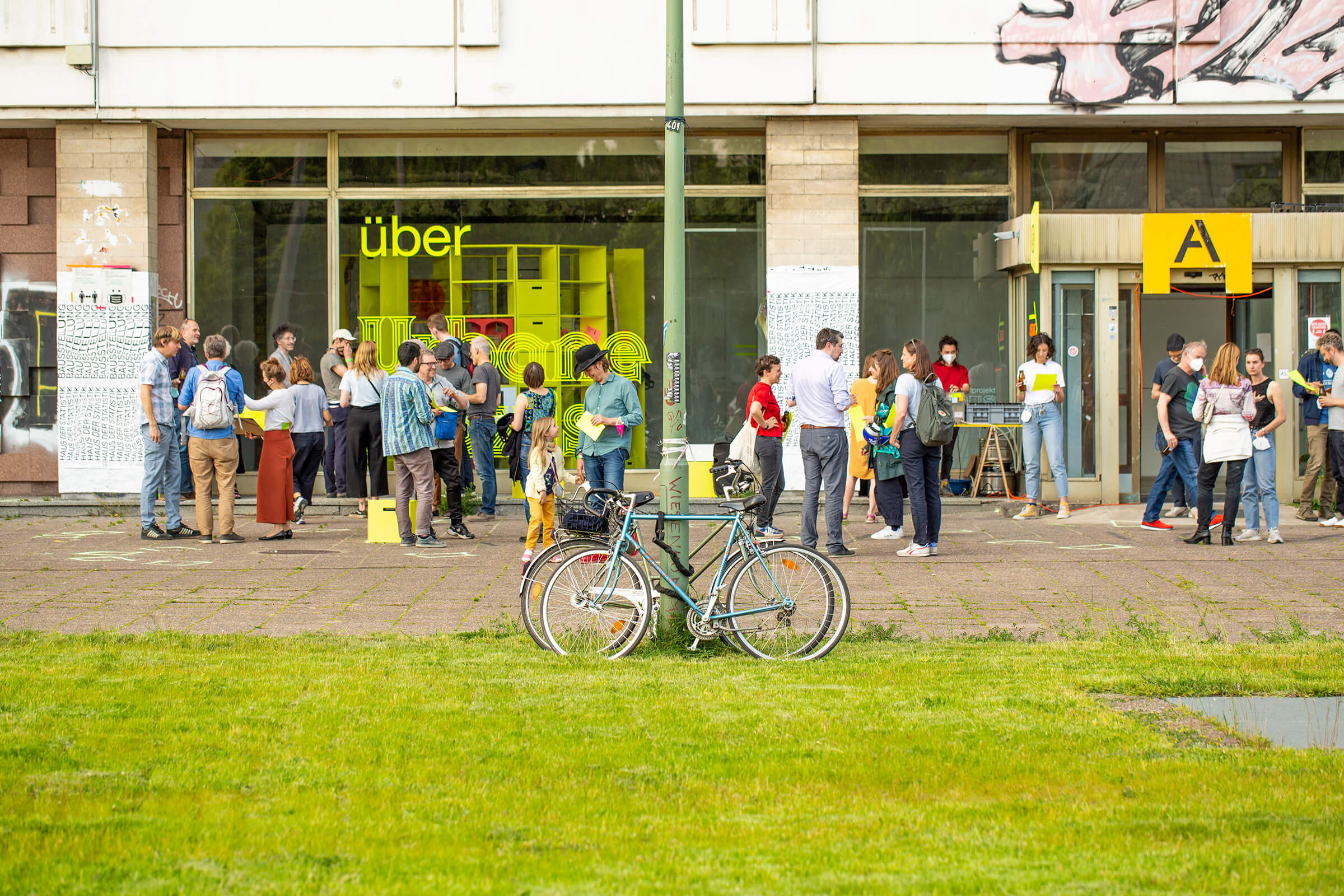
The exhibition ÜBER Urbane Praxis in 12+1 Berlin projects (ABOUT Urban Praxis) presents the fundamental principles and qualities of Urban Praxis (UP) in Berlin and puts them up for discussion. In the network of Berlin’s urban laboratories and campus projects, the Haus der Statistik occupies a central position. Without the artistic-cultural methodology of UP this pilot-project would be inconceivable in such a central and historically established location in the city of Berlin.
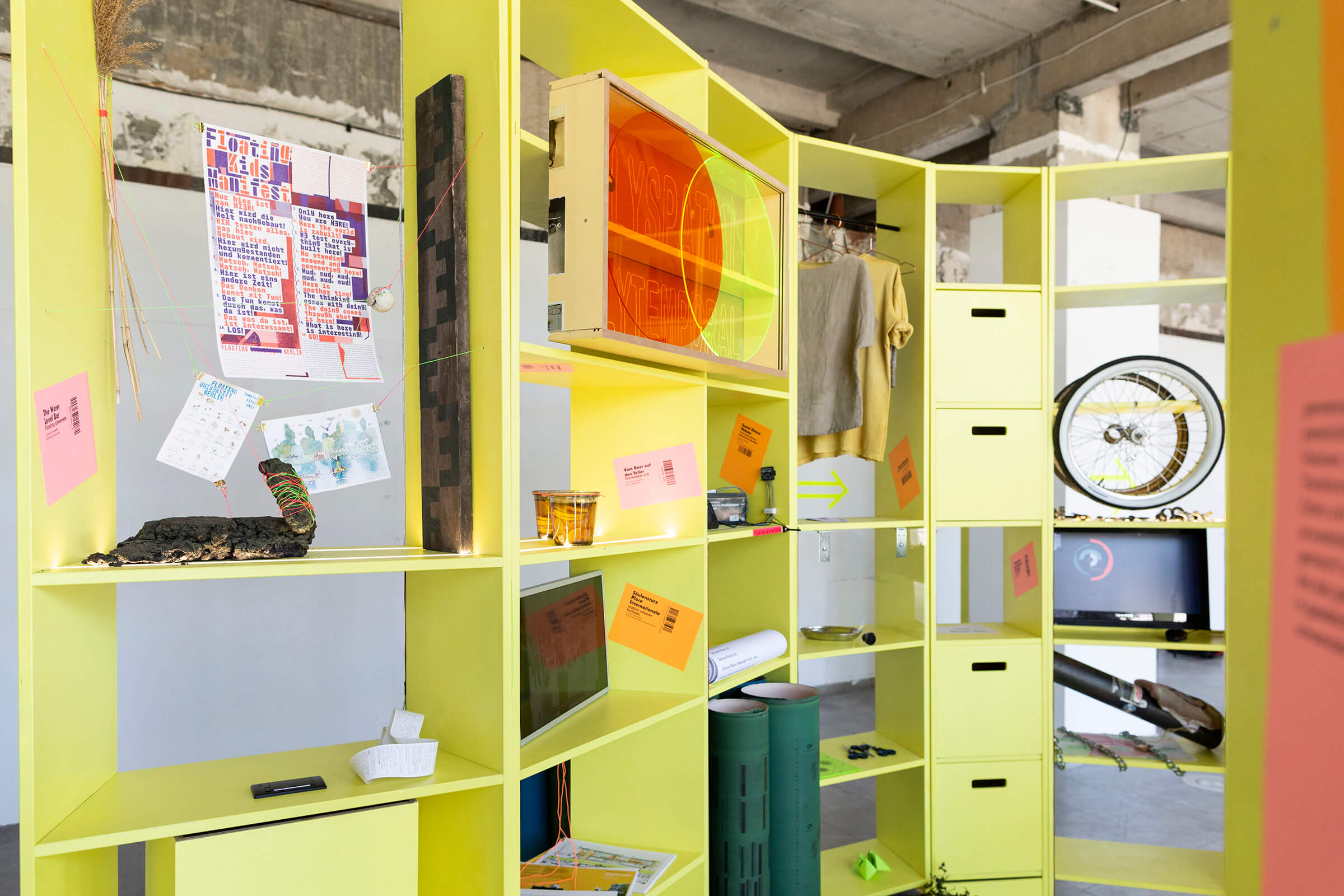
For the exhibition I met the people from the participating projects. Together we decided and designed the objects for the exhibition. Each objects conveys approaches of the public space, fields of activities and specifically developped knowledges. Put together, the collection immerses the viewer in an archipelago of urban activities. Through an interactive guide, they can each find to which project they have the closest affinity.
Pictures: Raquel Gomez Delgado, Martin C. Welker
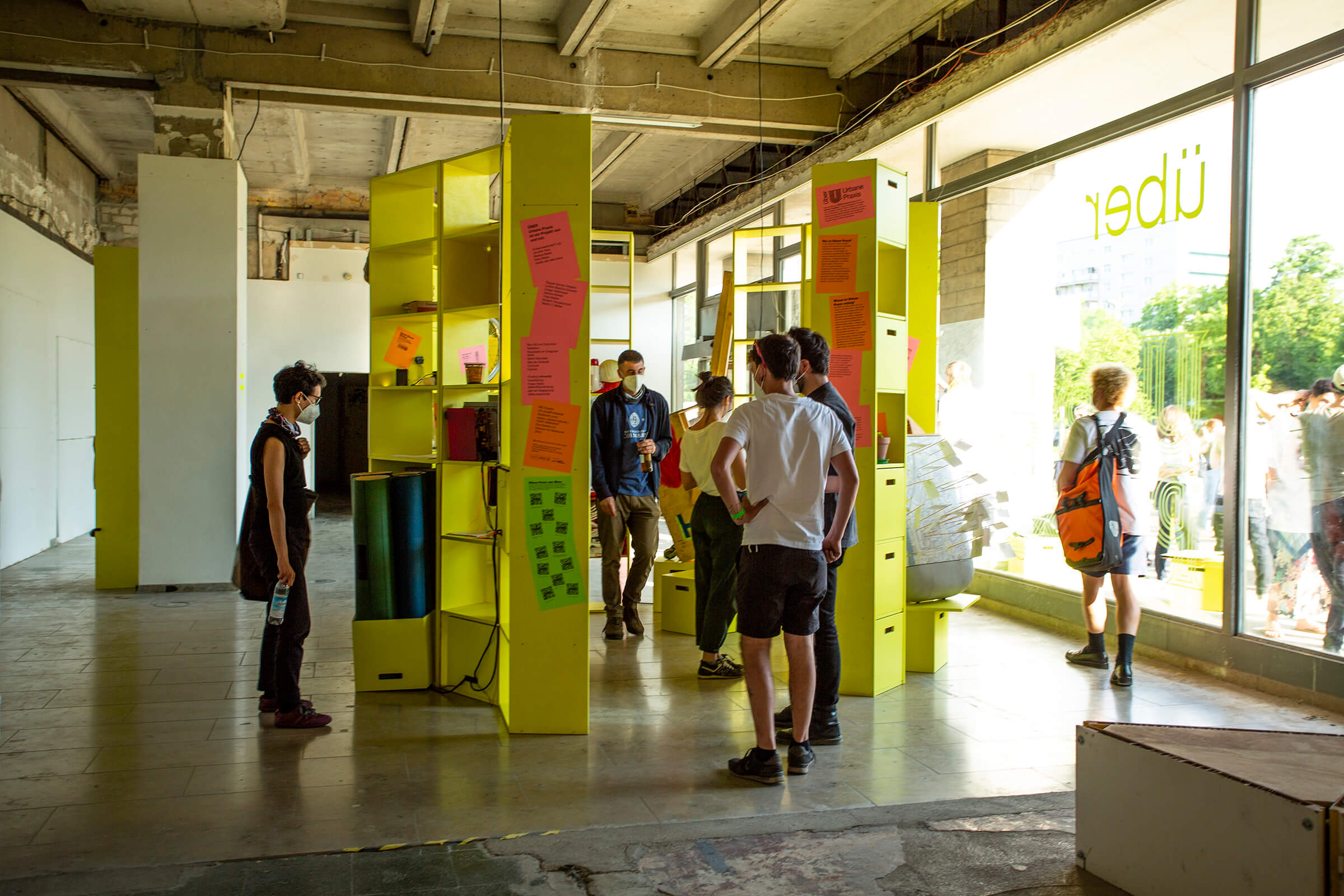
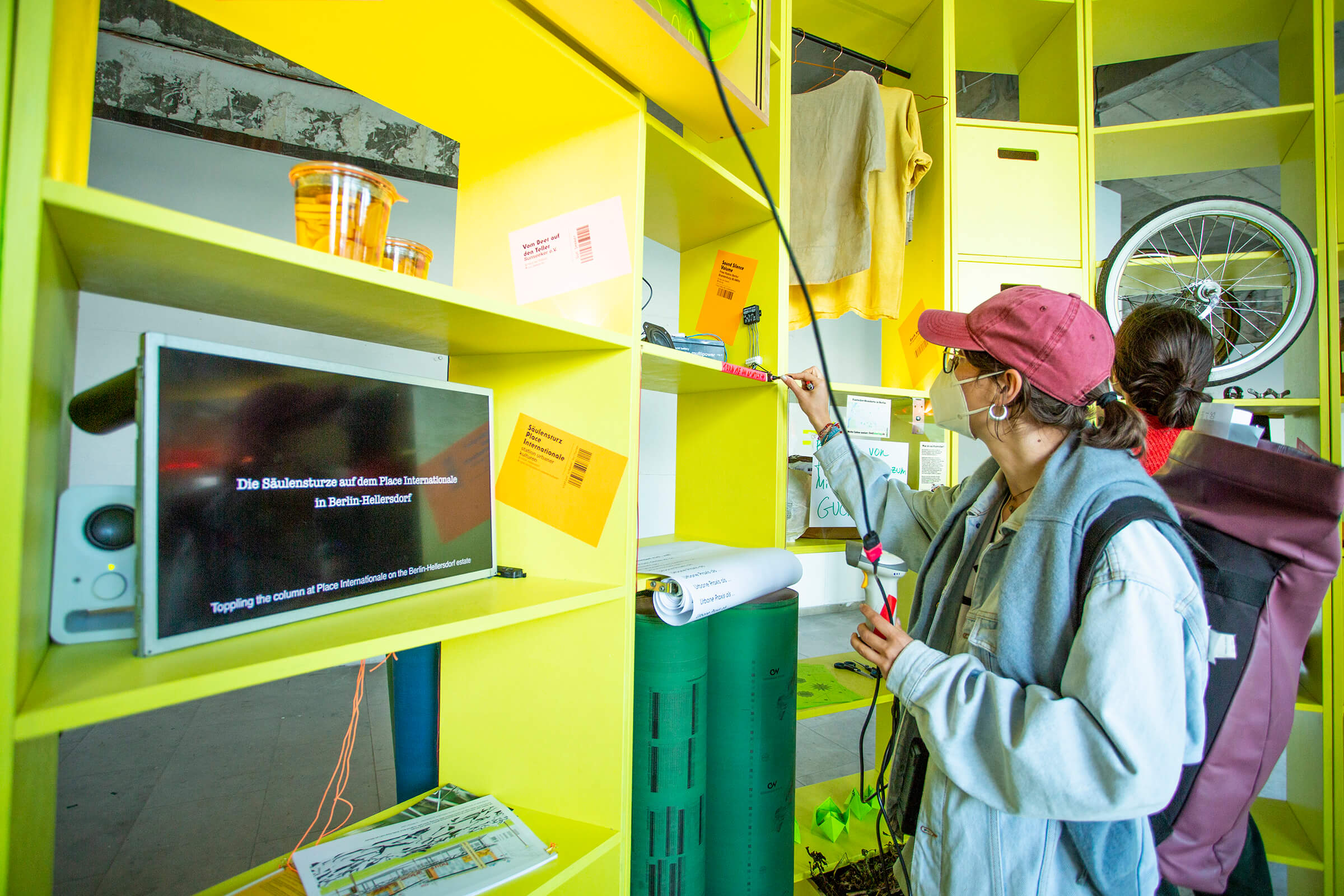
Fanzine workshop, BA Fine Arts, Hochschule der Künste, Bern, April 2021
Magazines, fanzines, artzines, zines have a long tradition as a favourite medium in the world of sub-cultures. Having its roots in the very early times of the invention of the printing machine, the production of printed matter for voicing ideas exploded at the begin- ning of the 20th century. Up to today, even through the digital revolution, xeroxed paper is more than ever circulating among many communities. Artists played many roles in this history, and by creating our own series, we will explore the different components entailed in the making of a zine, from creating contents to its modes of distribution.
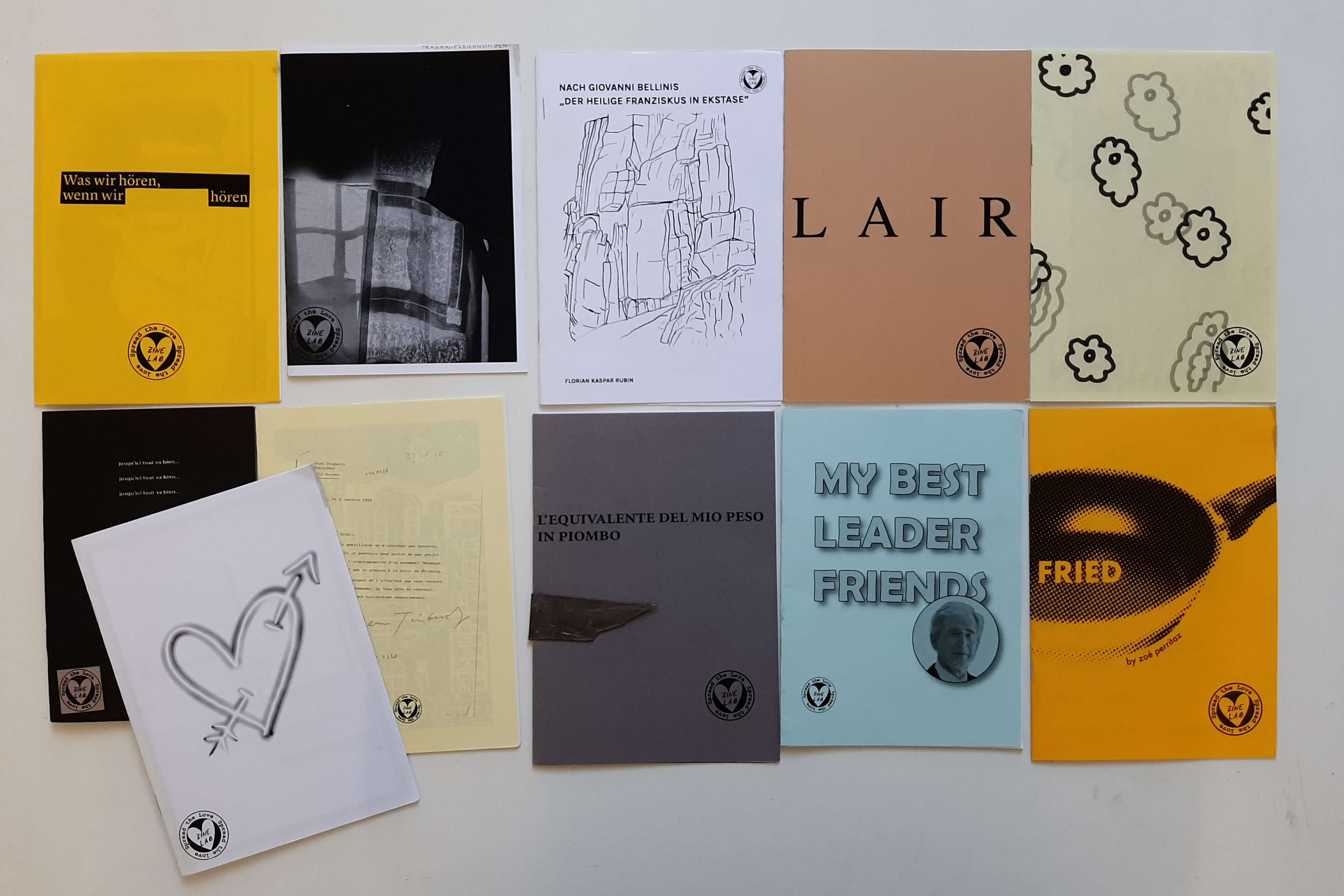
Preview of the Atlas Europe Square, November 2020.
In its November 2020 issue, Tank Magazine features two projects as designed for my forthcoming Atlas Europe Square.
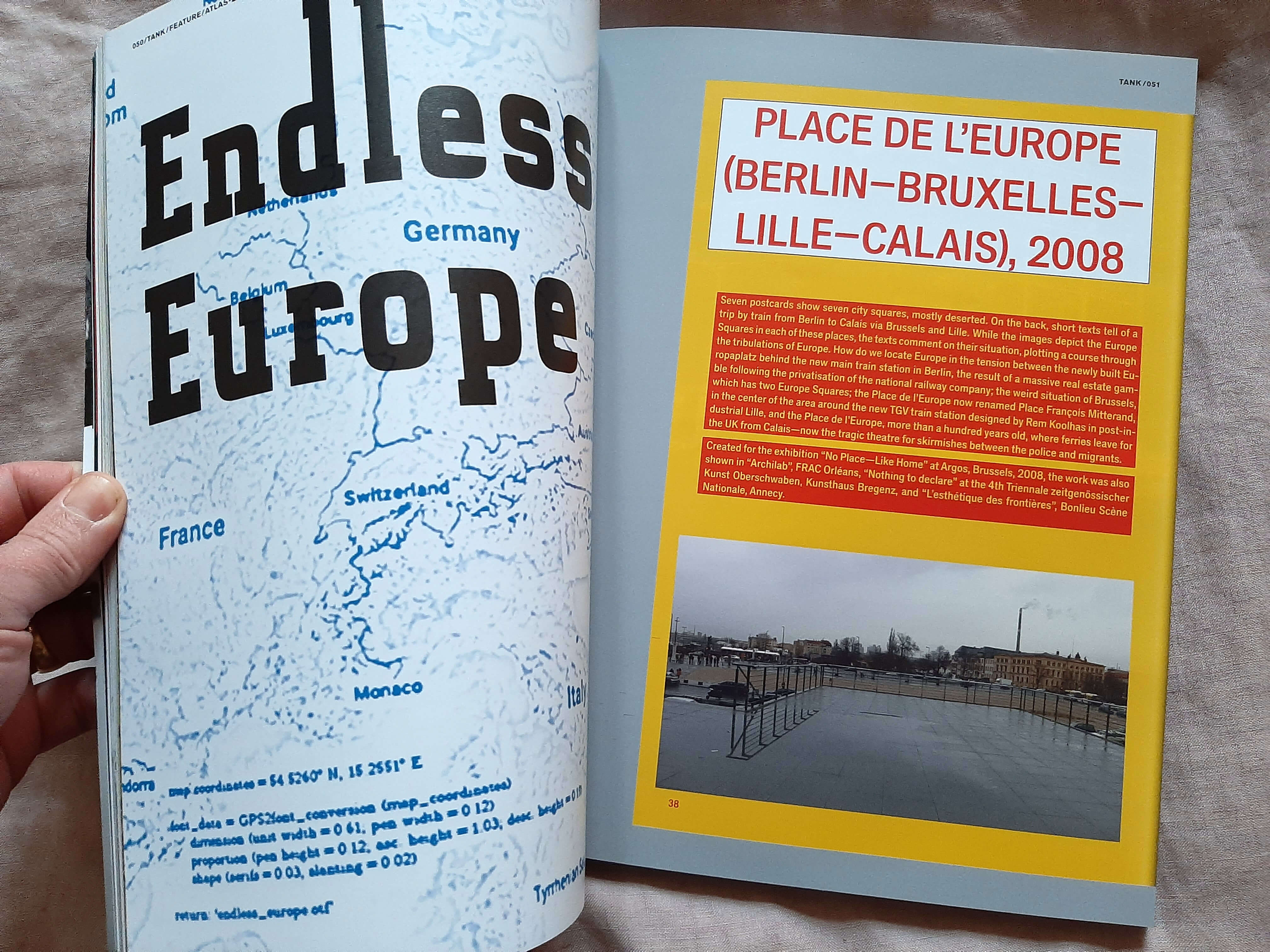
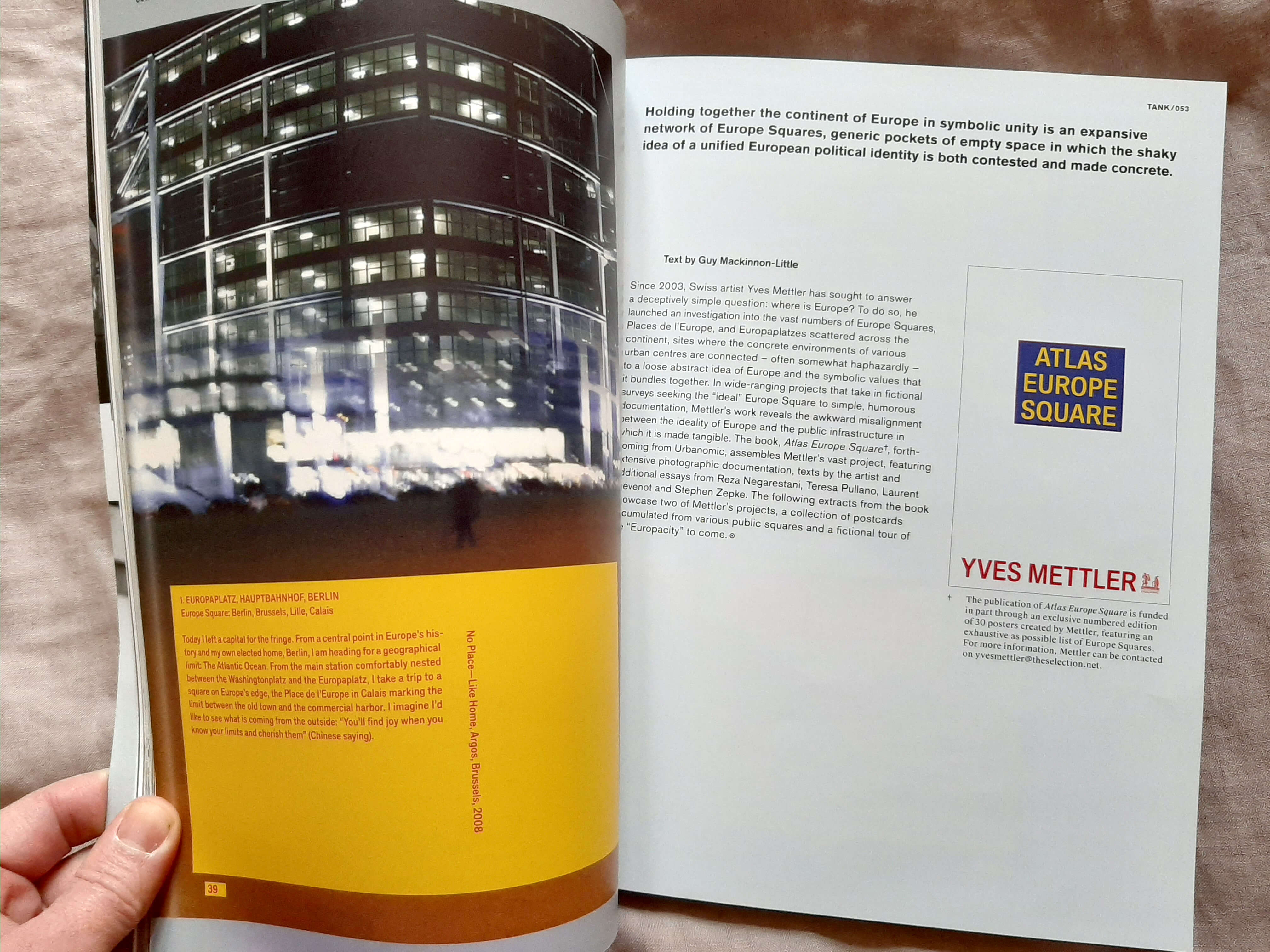
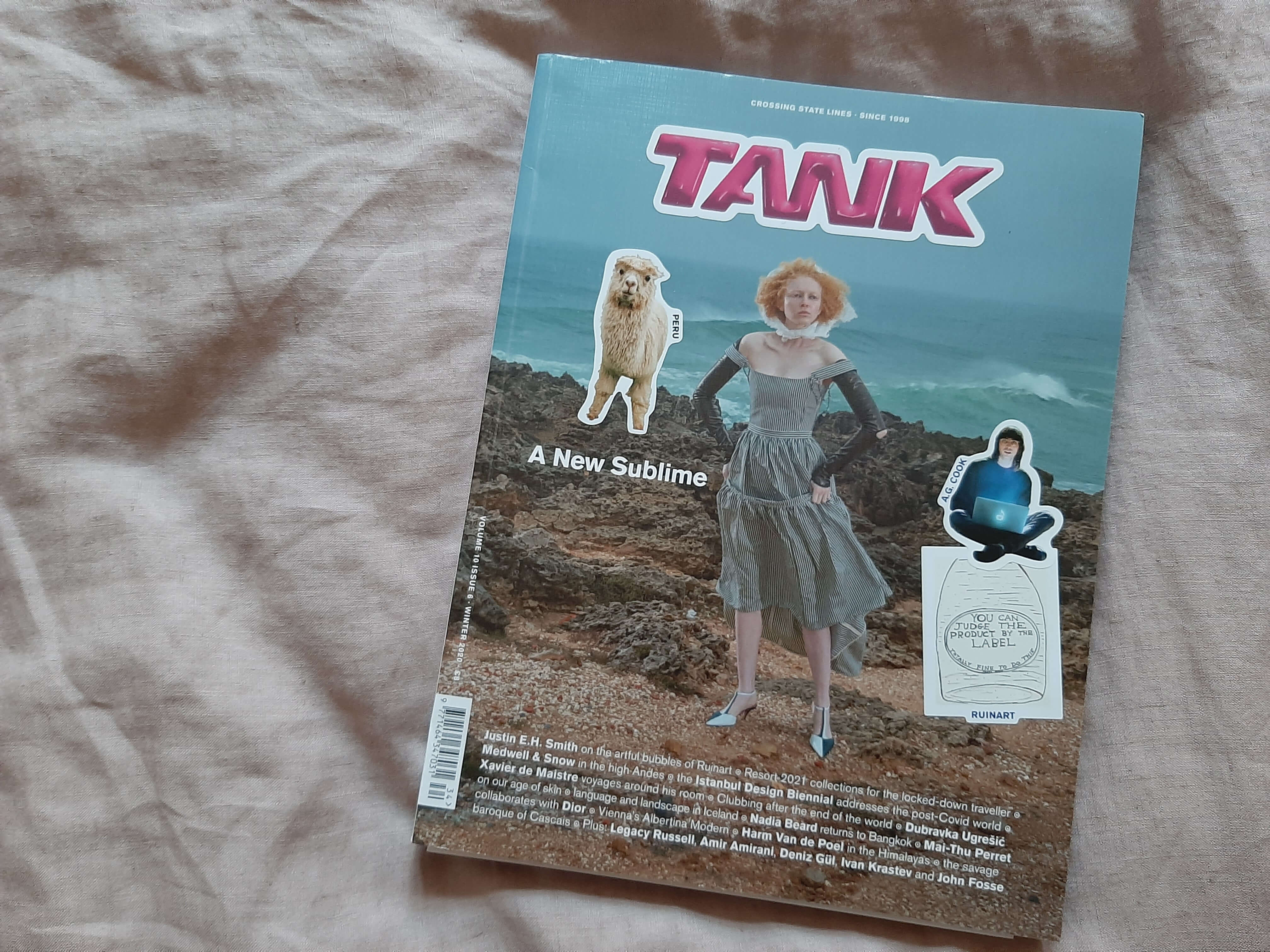
Website as exhibition, HKB fine Arts BA, Bern, June 2020.
Hotel Krone, on display from June 2020 to June 2023
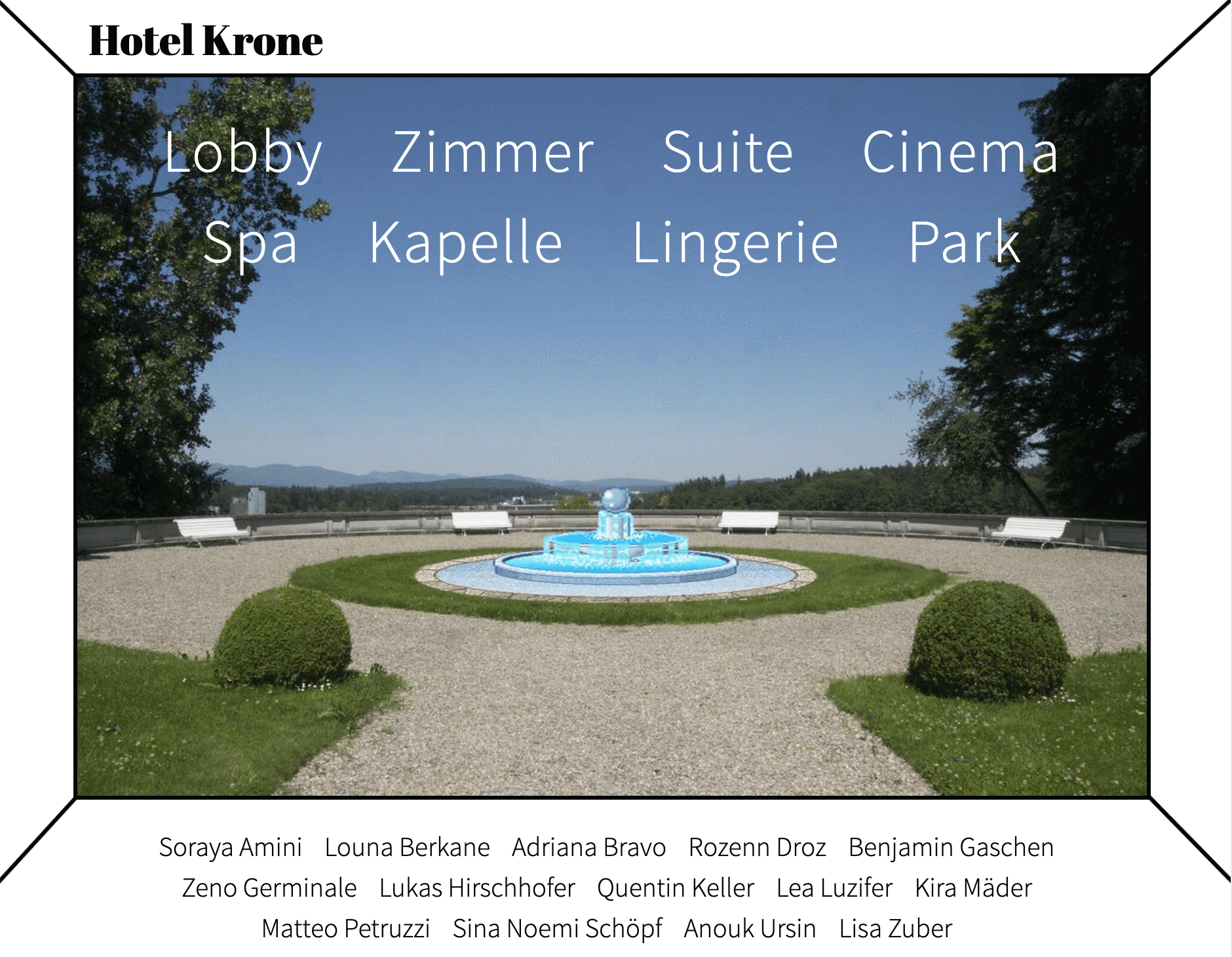
Together with the students and the teachers of the Fine Arts BA at the HKB, Berne, I designed and setup the final exhibition as a website. The website is designed as virtual hotel within which the works for the BA are presented in rooms like the spa, the lobby, the chapel, the parc, etc...
Exhibition, with Patricia Geraldes, Accademia di belli Arti, Roma, June 2019
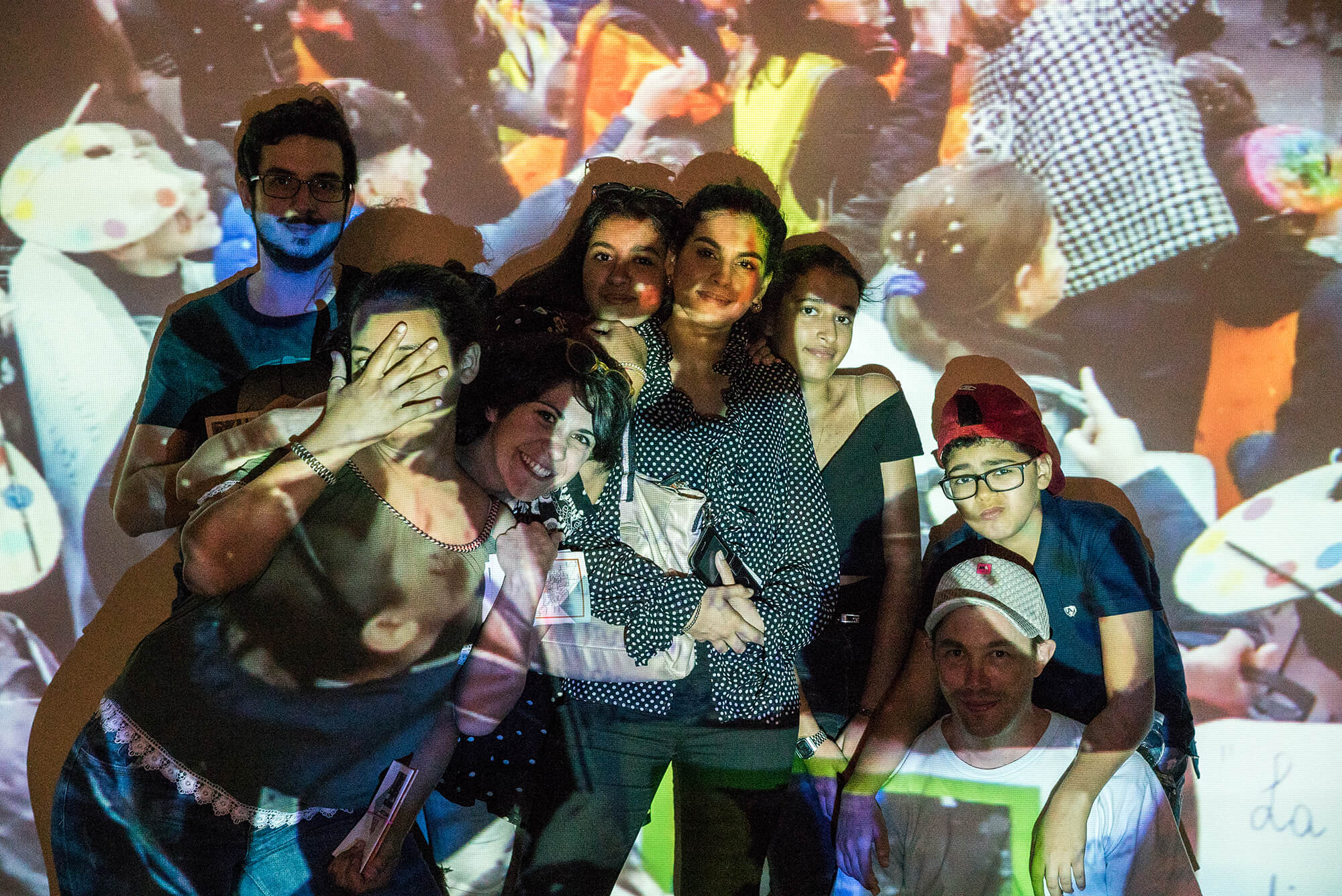 Photo: Mindaugas Drigotas, Nanook
Photo: Mindaugas Drigotas, Nanook
At the end of the residencey where I worked on the narrative of periphery and center in the roman neighbourhood Laurentino 38, I presented a video installation, posters, comics and maps realised with the teenagers at the association Pontedincontro. Exhibition organized by Latitudo, Roma, in the frame of the european art residency program MagiCCarpets.
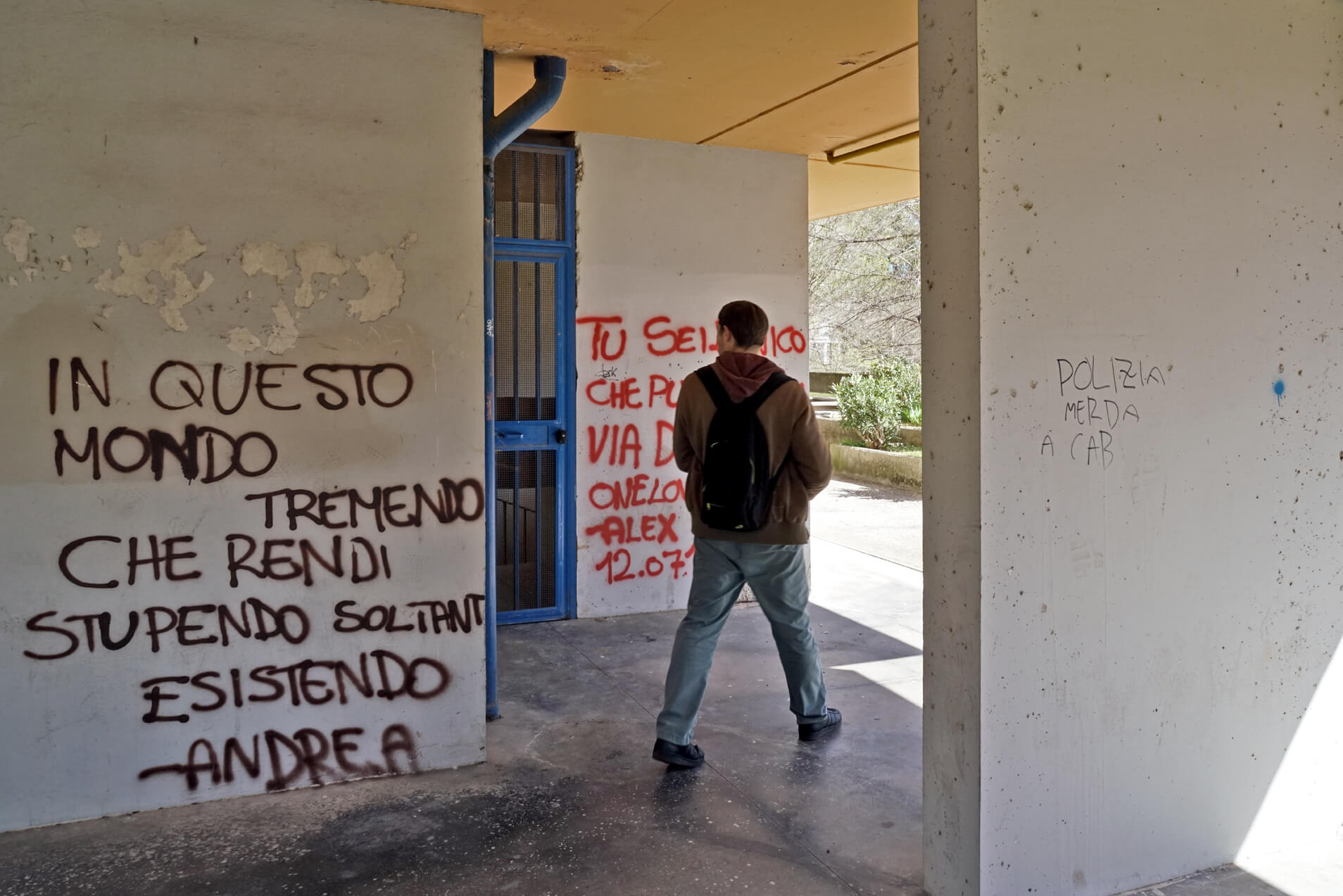 Photo: ©Luis Do Rosario, courtesy Latitudo for MagiCCarpets Platform
Photo: ©Luis Do Rosario, courtesy Latitudo for MagiCCarpets Platform
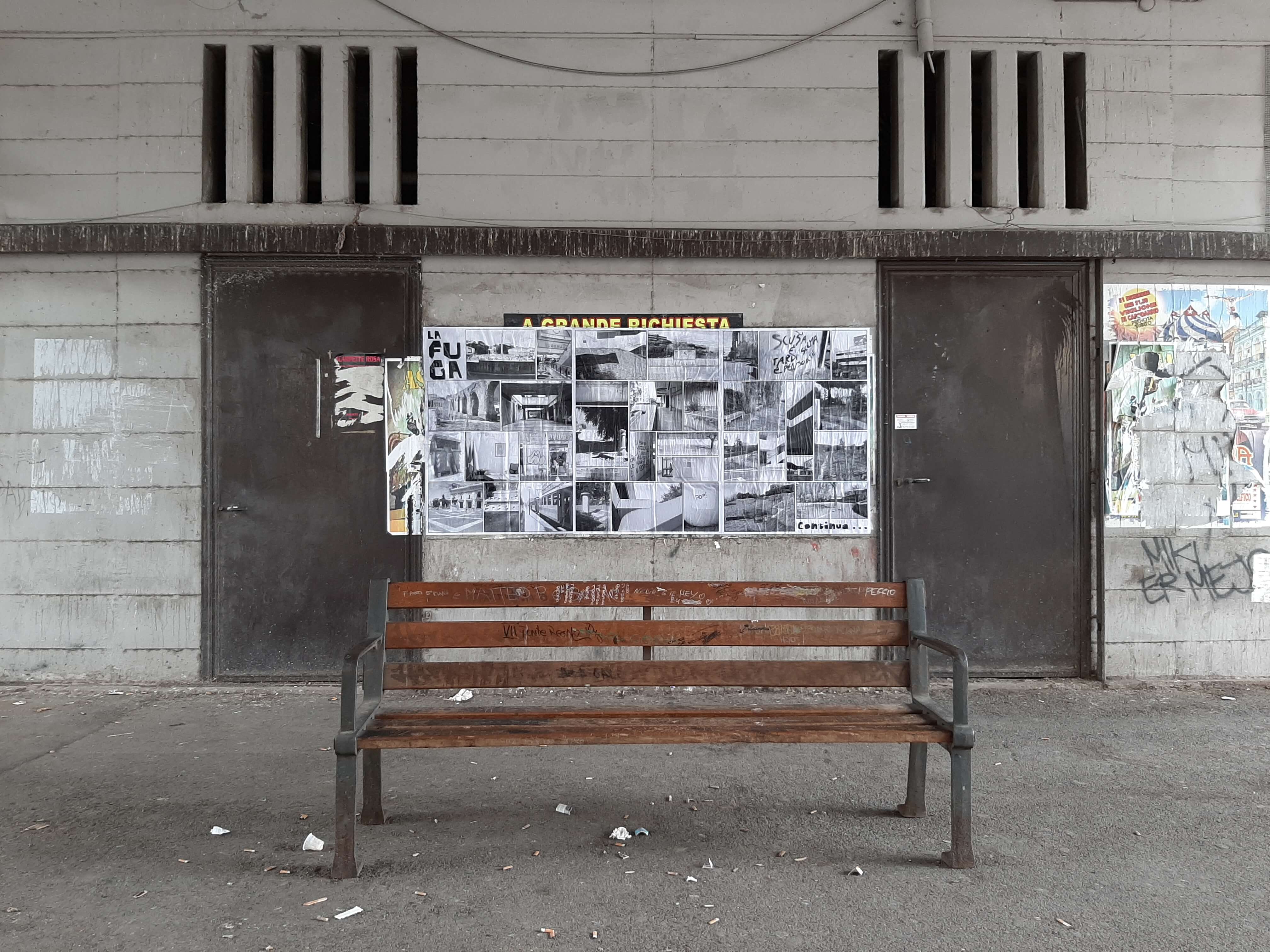
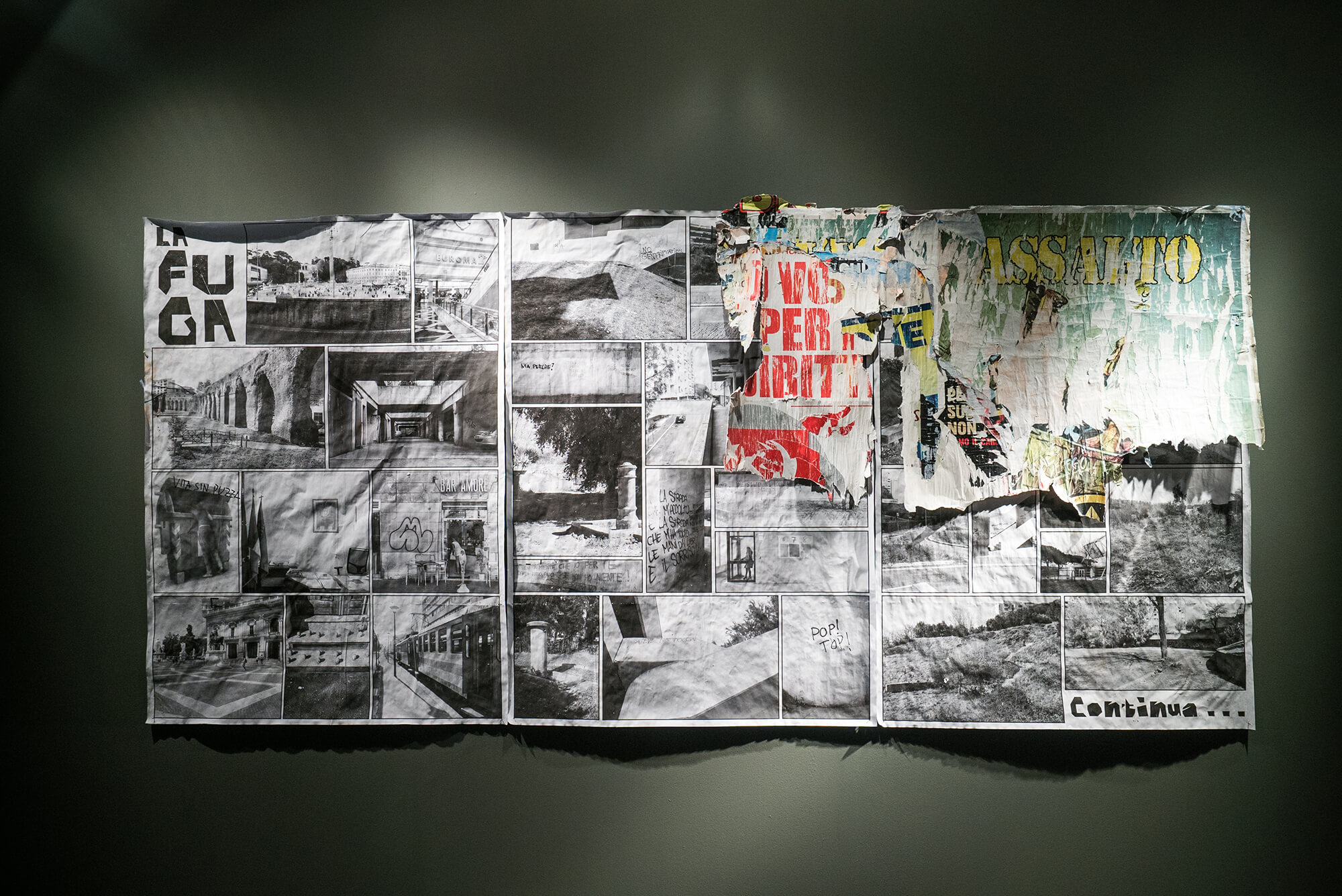 Photo: Mindaugas Drigotas, Nanook
Photo: Mindaugas Drigotas, Nanook
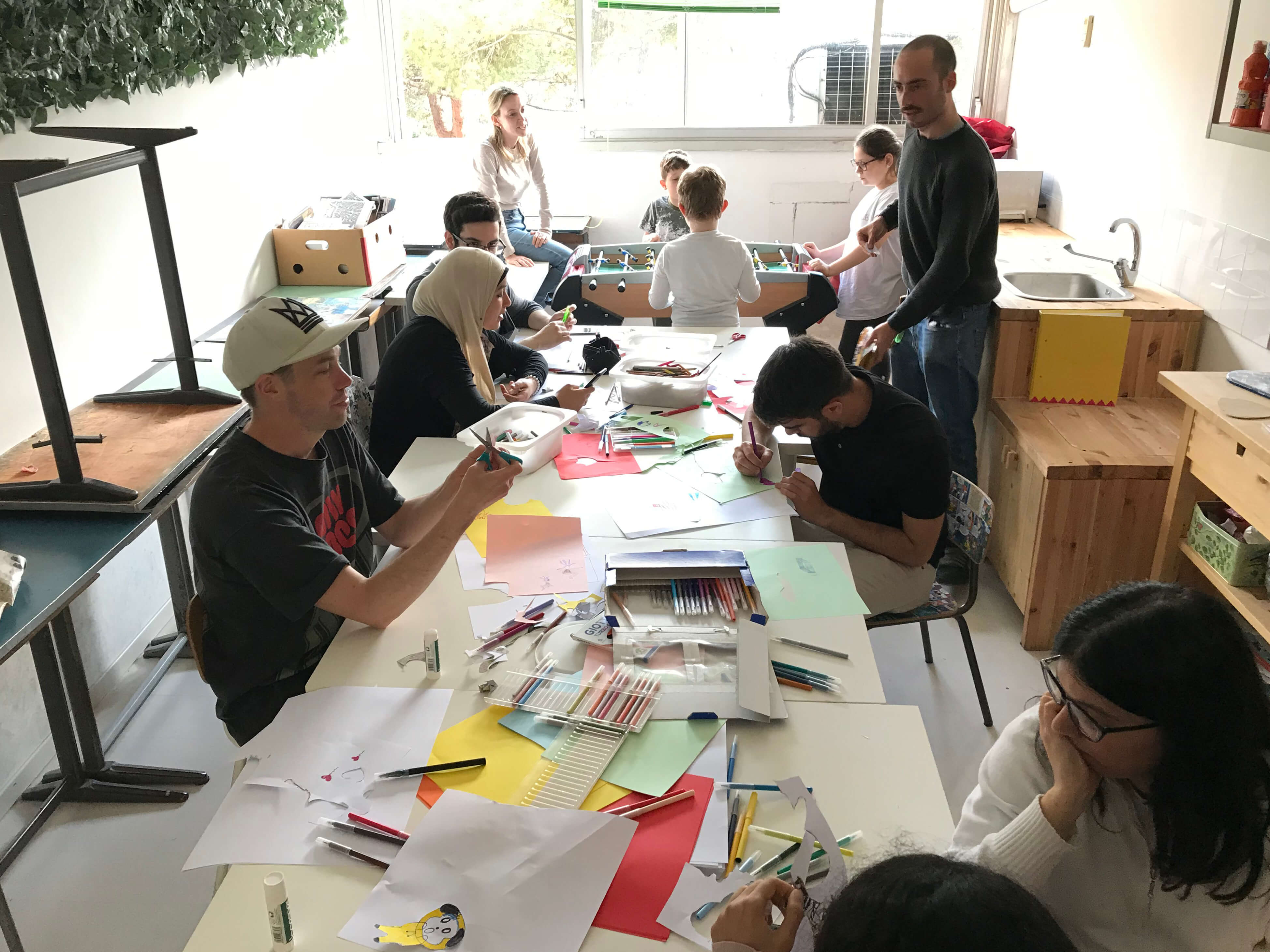
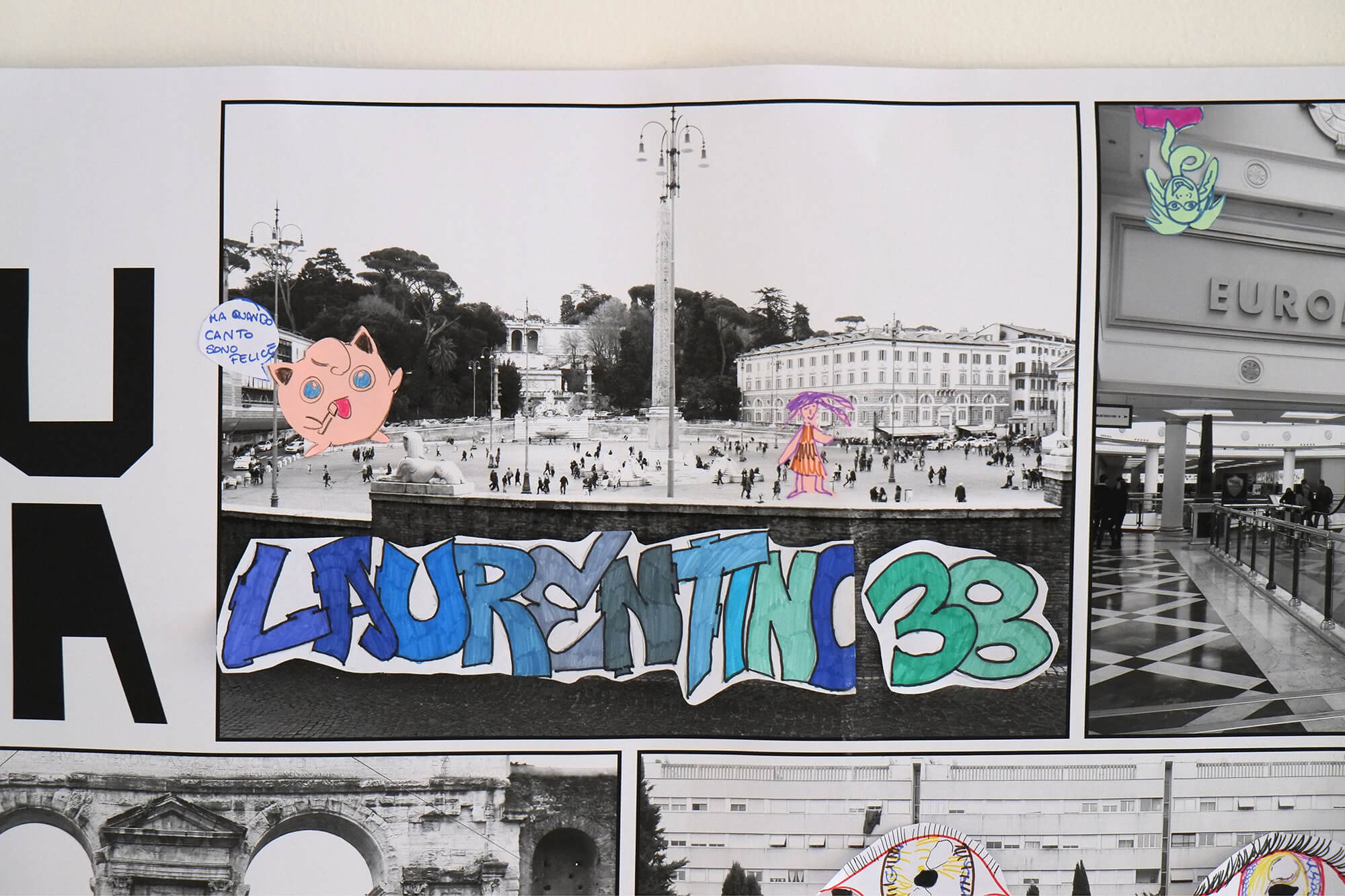
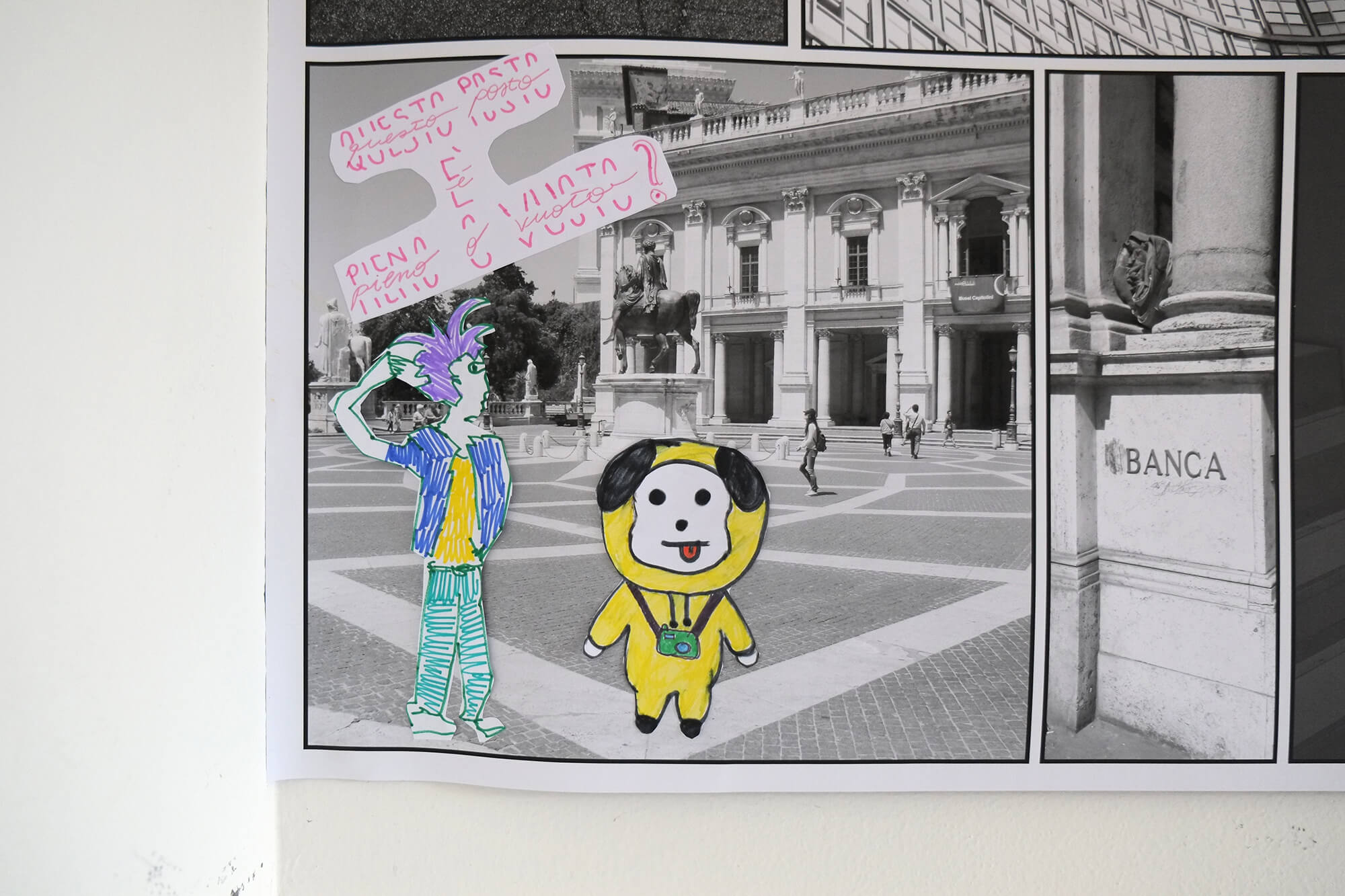
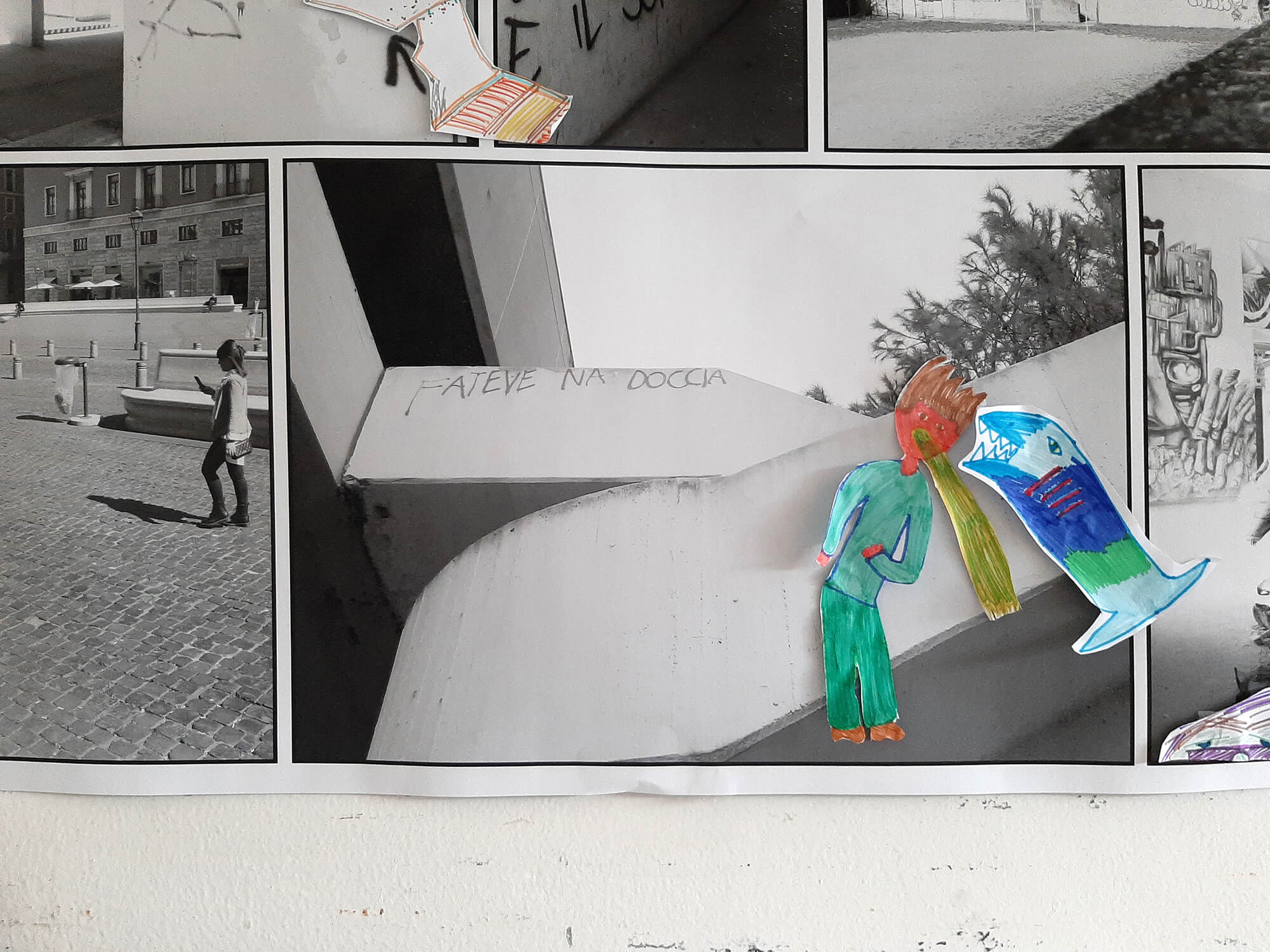
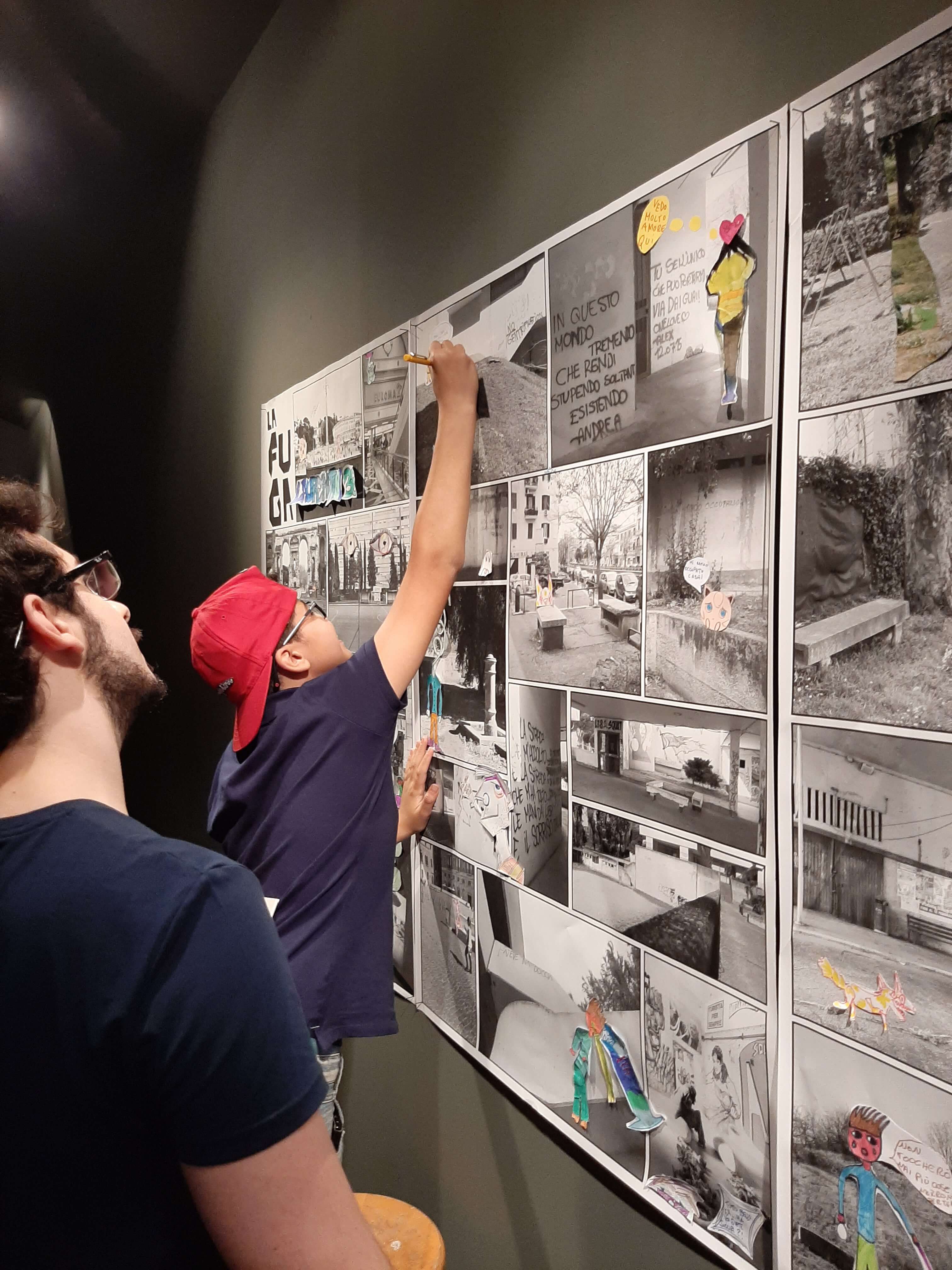
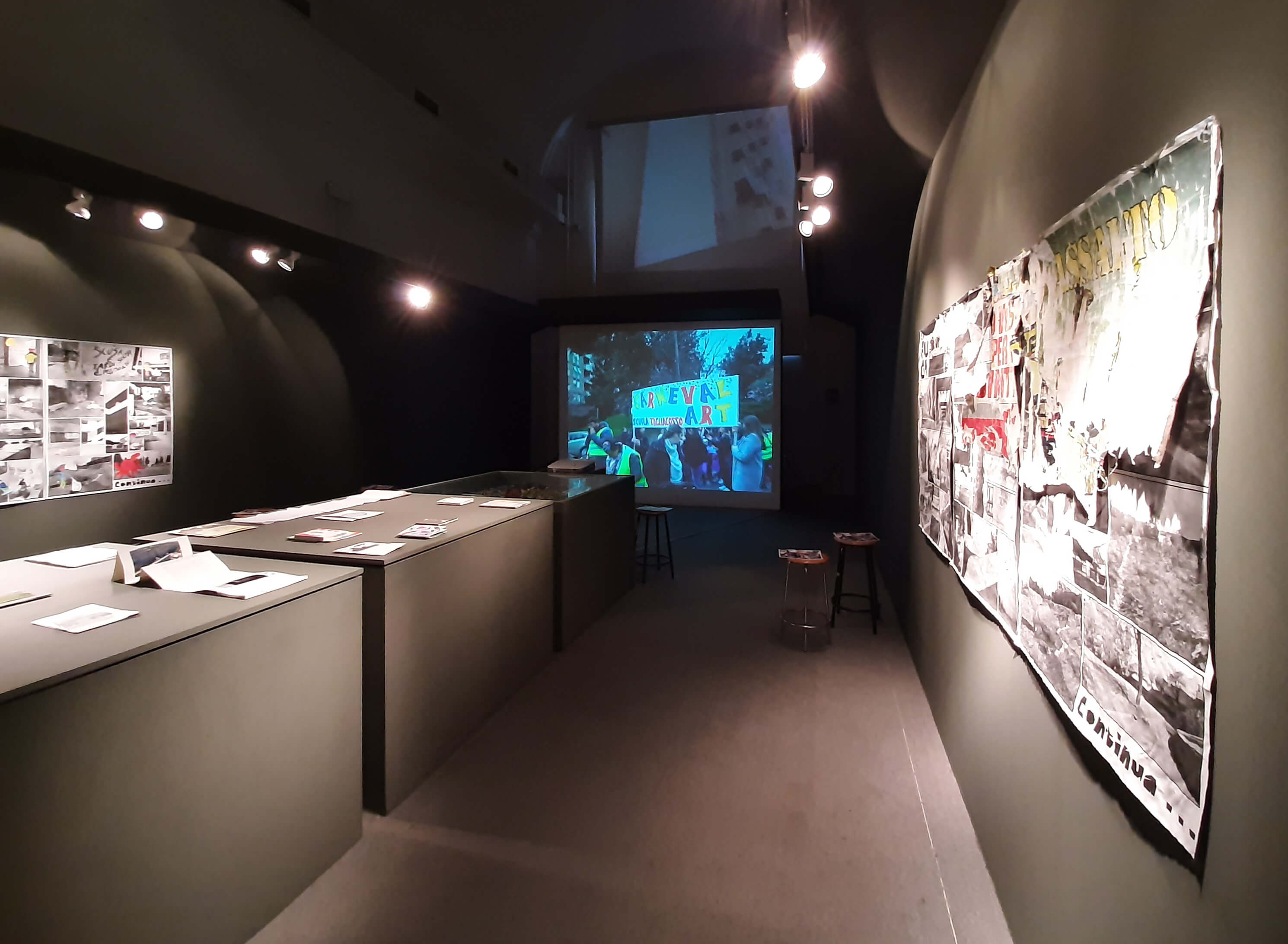
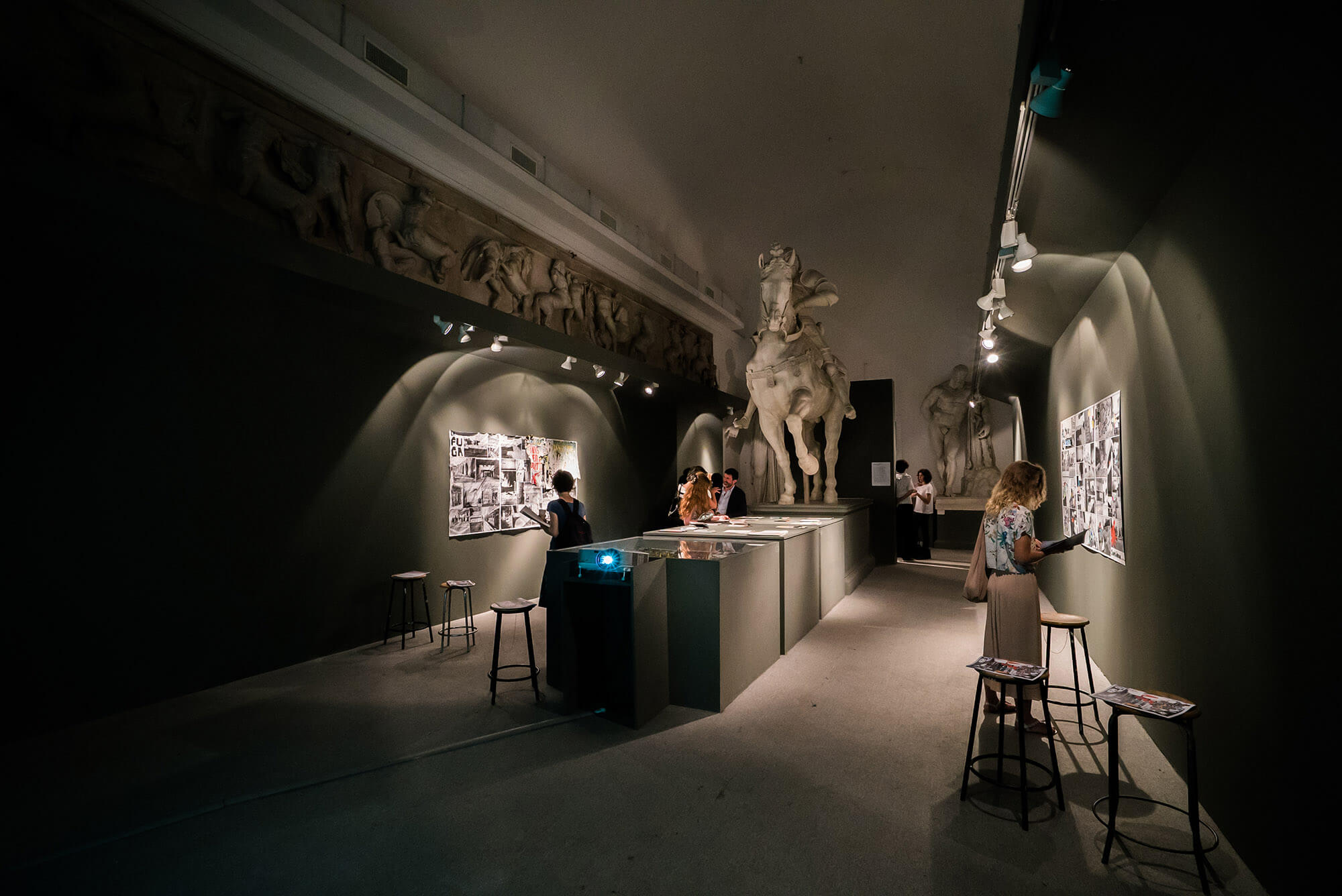 Photo: Mindaugas Drigotas, Nanook
Photo: Mindaugas Drigotas, Nanook
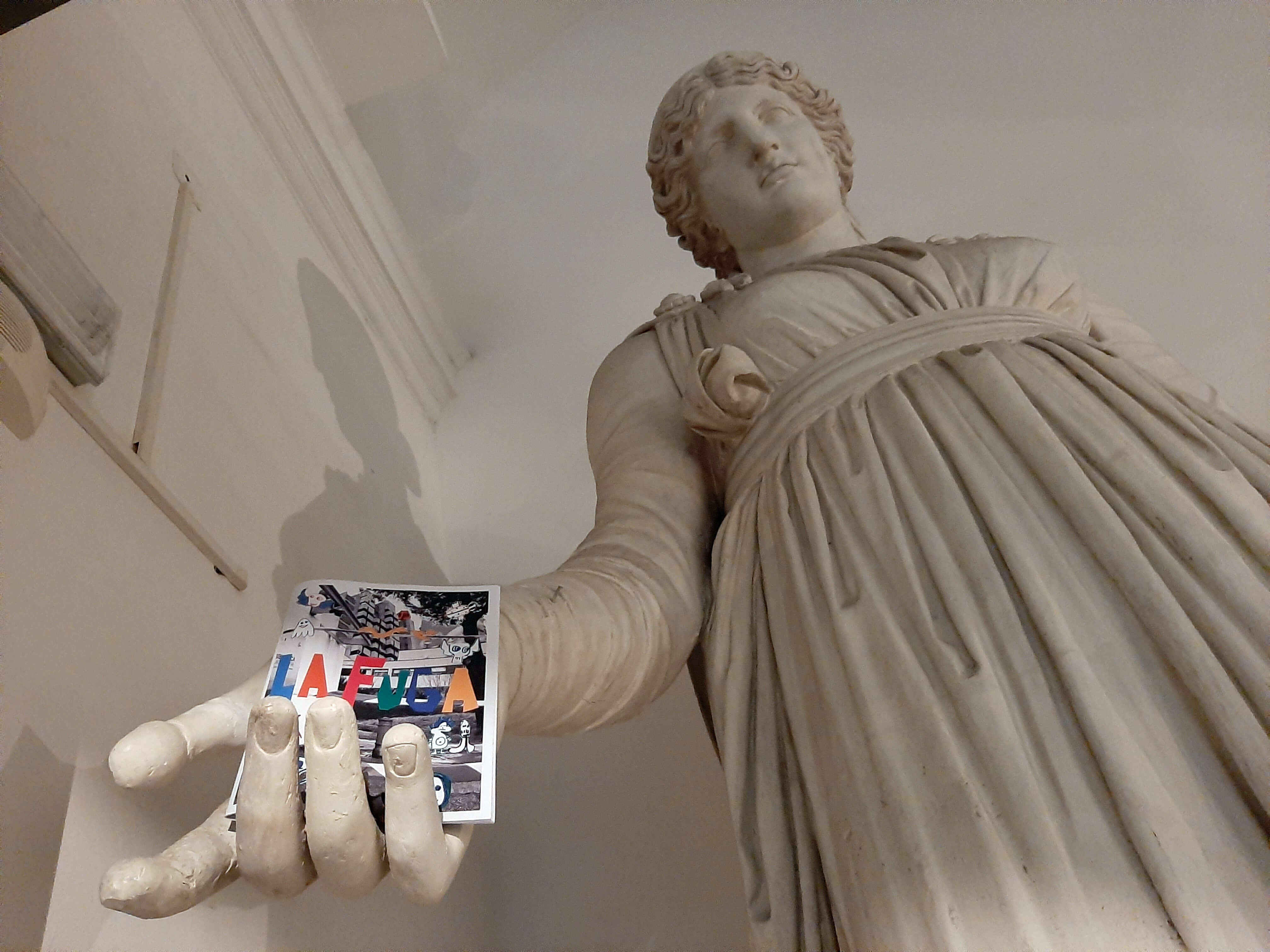
Talk at MACRO Asilo, Roma, June 2019
During my Magic Carpets residency in Rome, my host organisation Latitudo organized a talk at the museum of contemporary art MACRO Asilo. I offered a virtual tour across Europe Squares all over and outside of Europe.
Here the interview (eng/ita) made with Monica Bartocci at the RAI Play Radio.
"Seccion Arte" is a folder dedicated to contemporary art on the Cuban "Paquete Semanal" since 2009. Act [n°22] is published in parallel to the XIII Biennal de La Habana, April 2019.
ARTZine is a subjective visit of my artzine collection. It builds up a kind of genealogy, while rumaging through the pile of bound papers. The contribution includes a list of the publication and a series of "portrait" of the zines, as well as a spanish subtitle file.
The curator of the Seccion Arte project, Nestor Siré, is an artist based in La Habana, interested in internet, new medias and DIY intelligence. Follow the project on Instagram: @seccion_arte, and read more on Rhizome.org
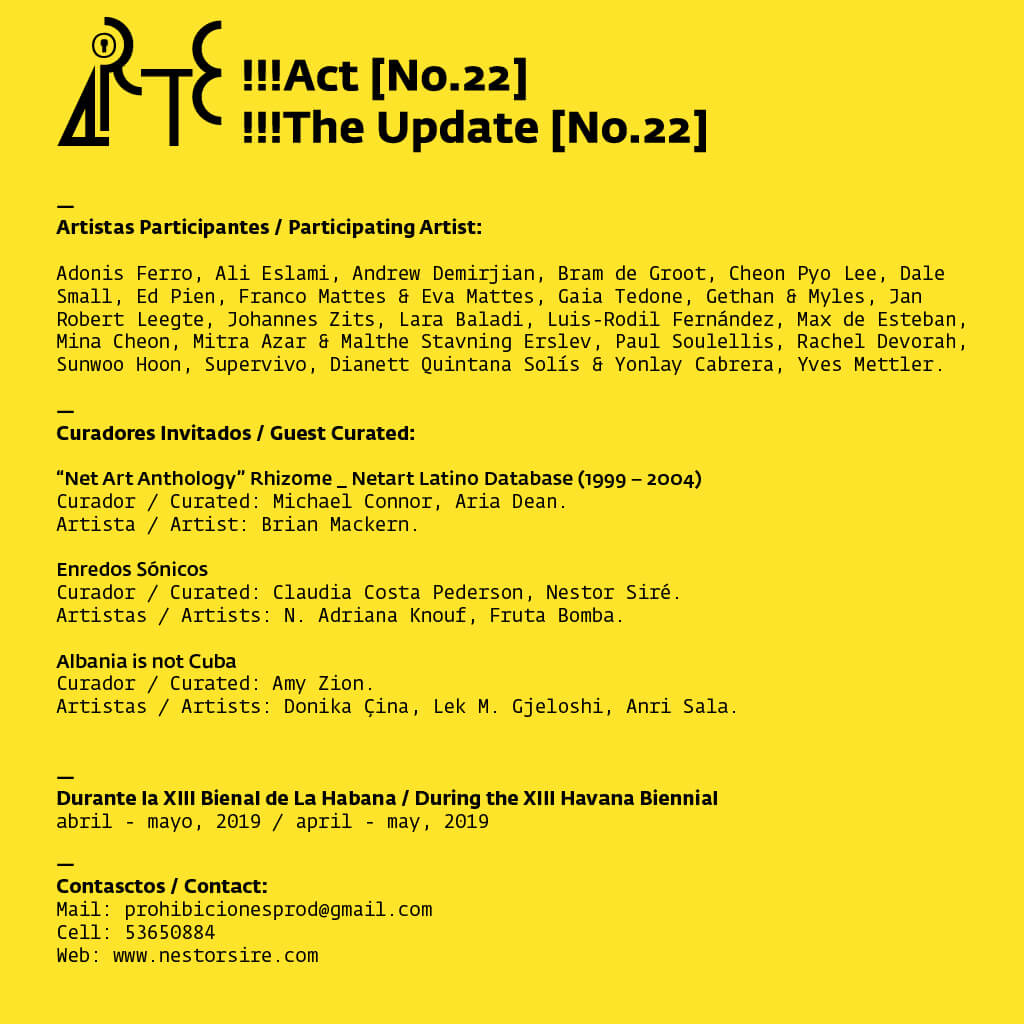
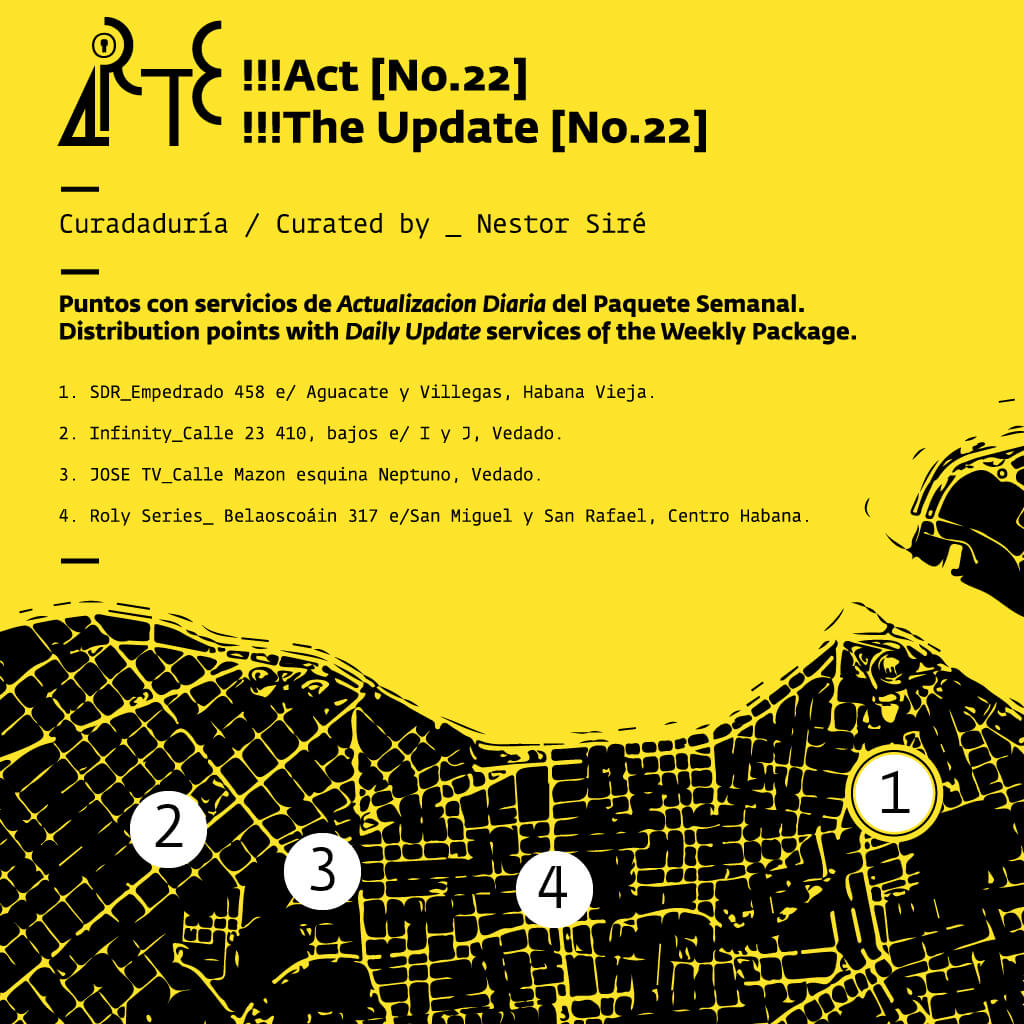
Workshop on culture & wellbeing, Akademie der Künste, Berlin, April 2019
The conference A Soul for Europe 2019 gave me the chance to meet a team of experts around the question of wellbeing. Together we held a workshop aiming at mapping that concept with cultural practices. The relevance for me was in the relation between public urban space and the personal capacity of taking action.
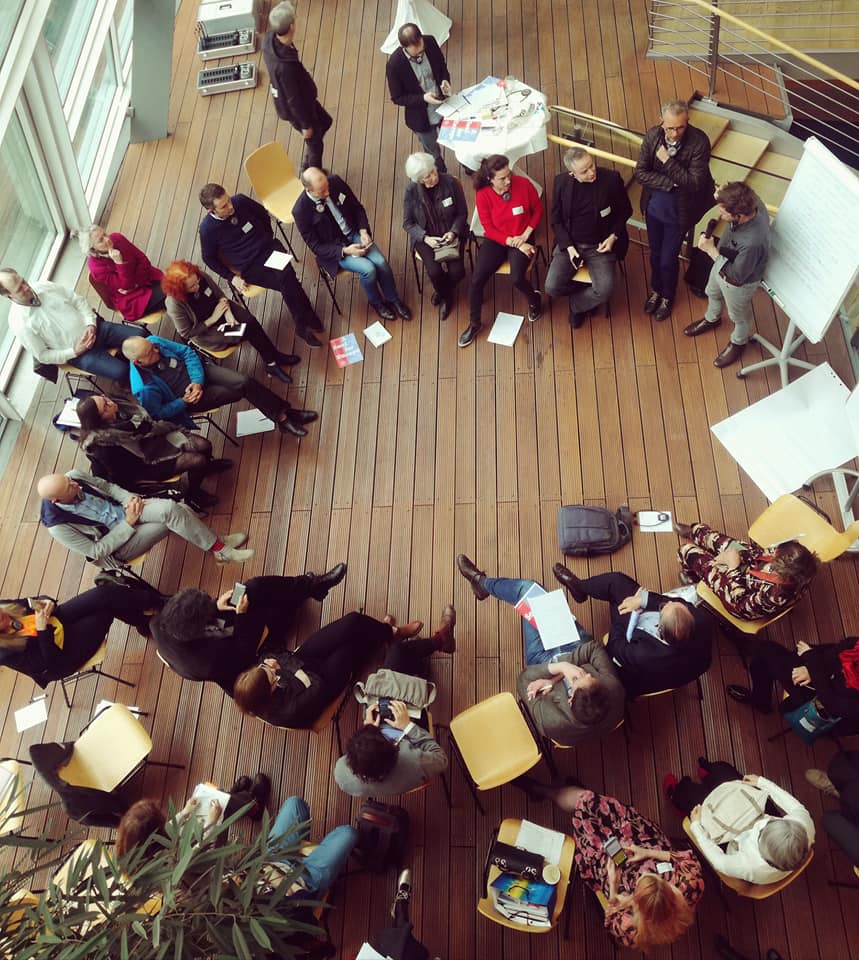
Culture & Well-being – A pragmatic Approach to move between European and local Politics through Culture
A Soul for Europe: Guido Ferilli, Frédéric Meseeuw, Mahir Namur, Rarita Zbranca, Yves Mettler | Arne Lietz (MEP): How do we define well-being and what role does culture play for the well-being of citizens? As new ways to address urban development, citizenship, difference, disability, happiness or meaning are needed for the future of Europe, we want to discuss an alternative approach to local politics through culture, articulated around the notion of well-being. Together we aim to form an informal group of people interested in discussing the topics further in the future.
Comics workshop at Biblioteca Elsa Morante during the research residency at Latitudo, Roma, organized by Magic Carpets, March 2019.
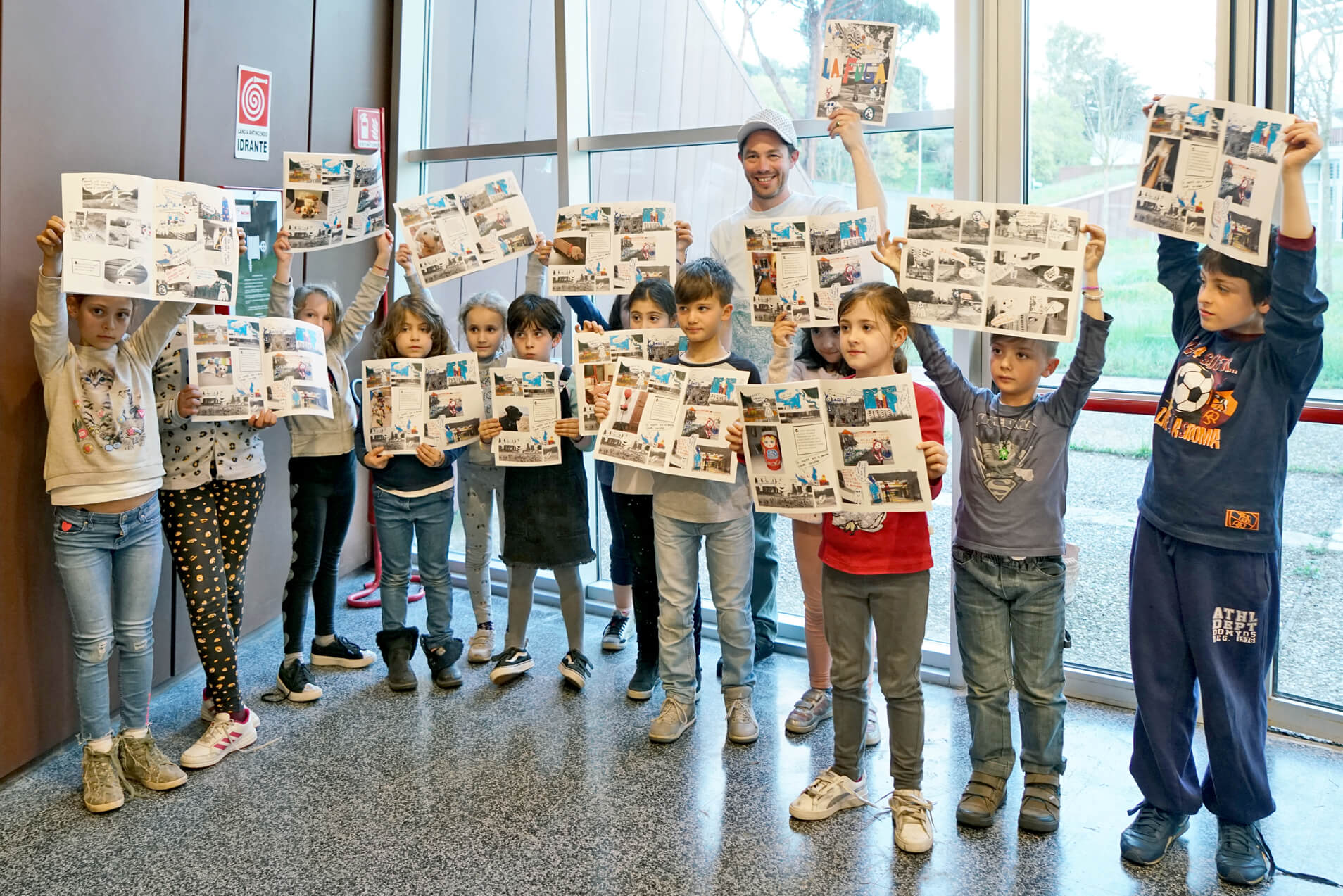
Photo: ©Luis Do Rosario, courtesy Latitudo for MagiCCarpets Platform
The comics is the result of a workshop with kids that are using the public library Elsa Morante. The library is in the Laurentino 38, a modernist project from the '70s. The workshop is part of an art& research residency in the neighborhoods of Laurentino 38 and Corviale, organized by Benedetta Carpi de Resmini and Giulia Pardini. The aim of the residency is to work on alternative narratives for the stigmatized neighbourhood.
During the residency, I also worked at Pontedincontro, an association welcoming kids and teenager after school twice a week. In June an exhibition at the Academia delli Belle Arte will present the outcome of those encounters.
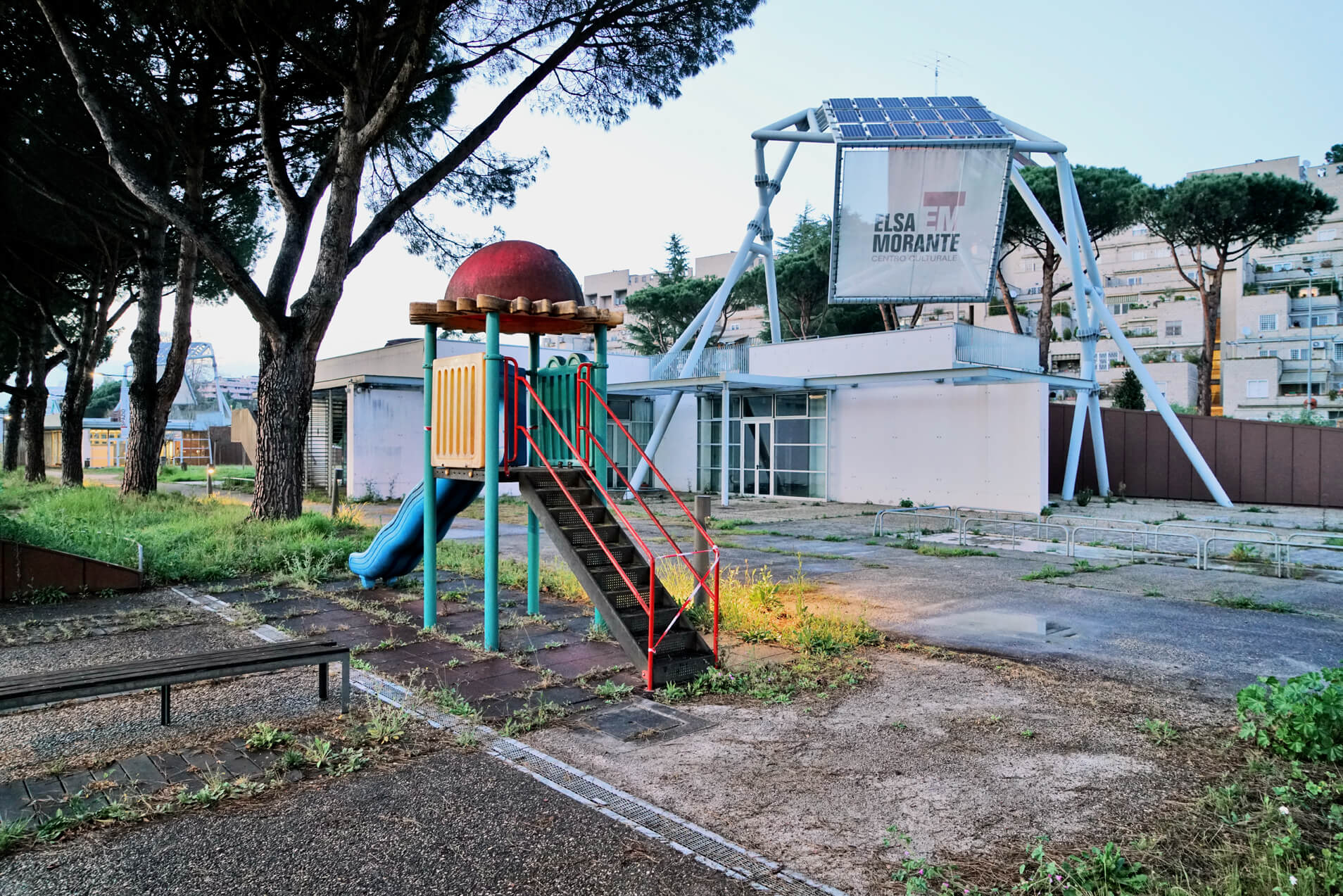
Photo: ©Luis Do Rosario, courtesy Latitudo for MagiCCarpets Platform
tip Berlin, March 2019
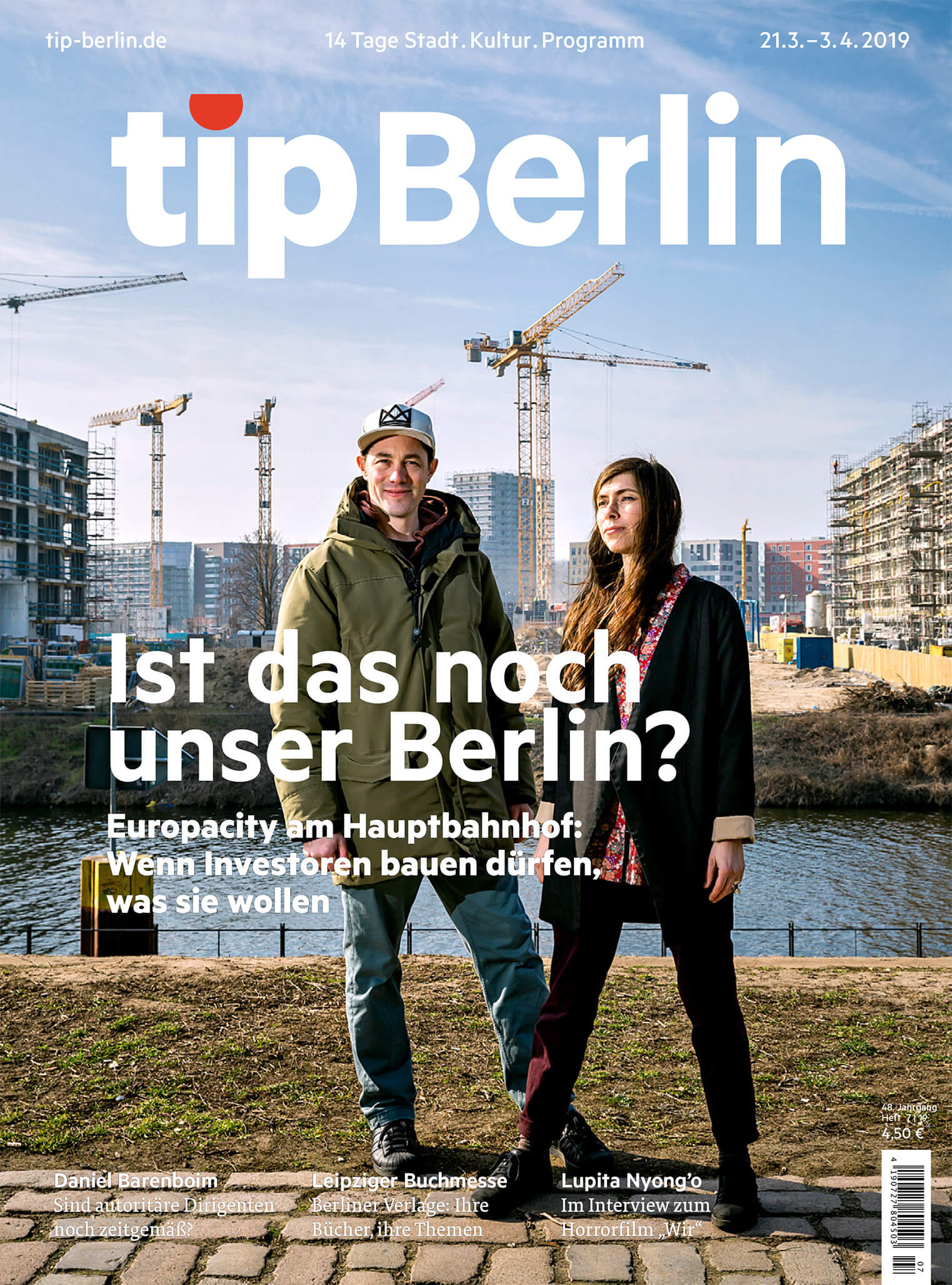
The project Am Rand von EuropaCity featured as cover story in the Berlin event & program magazine!
Workshop given together with Alice Chauchat
HZT Berlin, BA Dance, Context, Choreography, UDK, Wintersemester 2018-19
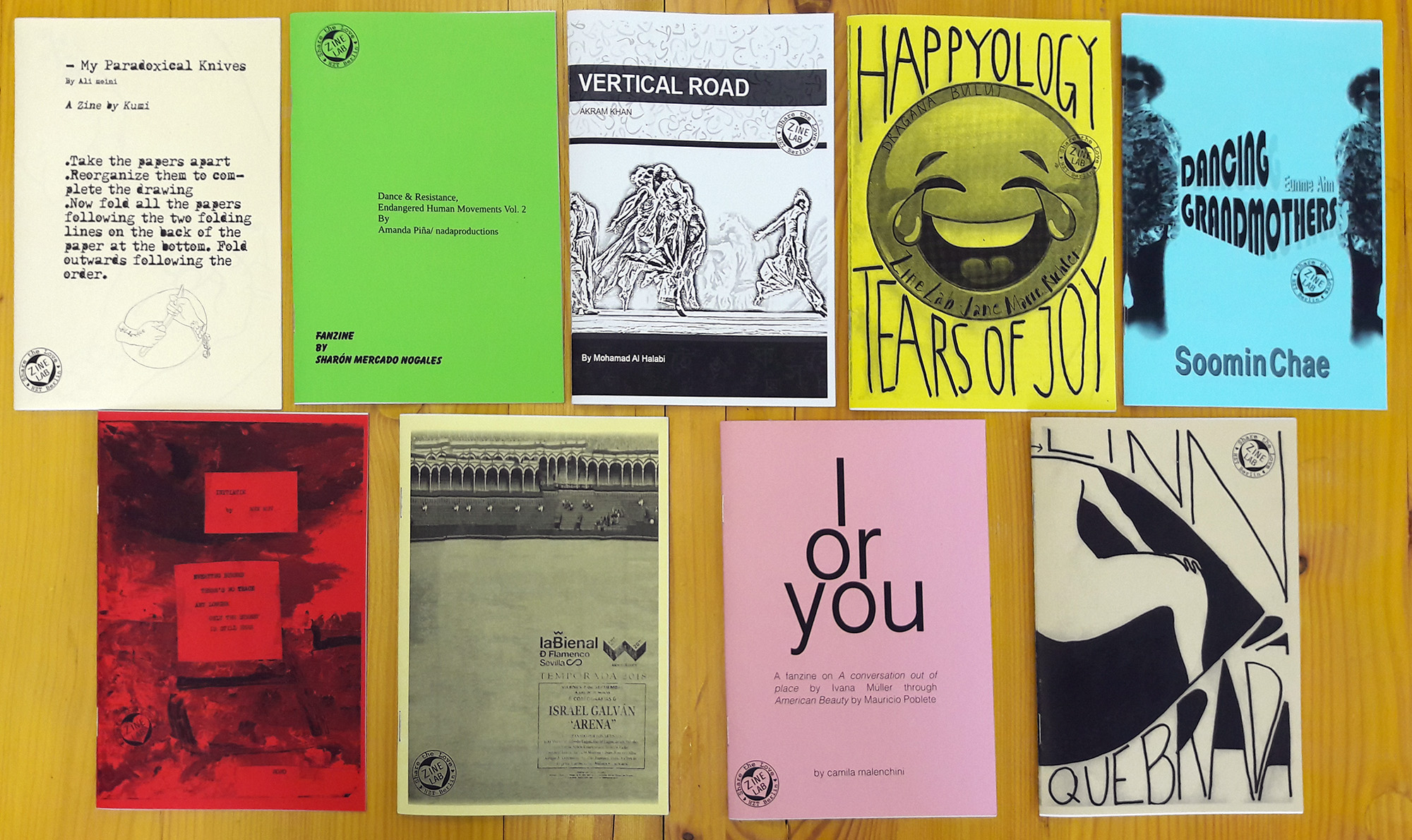
Over a period of three months, students were invited to create and distribute a fanzine each about a piece of live art they would want to celebrate and circulate. Altogether, nine zines were created:
Maud Buckenmeyer on Initiatik (Run Run), Soomin Chae on Dancing Grandmothers (Eun-Me Ahn), Margarida Delmiro Alfeirá on Coytada Tour (Linn da Quebrada), Enrique Garcìa Gil on Arena (Israel Galván), Mohamad Al Halabi on Vertical Road (Akram Khan), Kumi on My Paradoxical Knives (Ali Moini), Camila Malenchini on Conversation Out of Place (Ivana Müller) & American Beauty (Mauricio Poblete), Sharon Mercado Nogales on Dance and Resistance - Endangered Human Movements vol. 2 (Amanda Piña) and Jane Marie Richter on Happyology (Dragana Bulut).
Each issue was printed in 70 copies and distributed in many ways.
Keynote for the Graduation Ceremony, Master Program Europainstitut Basel
Naturhistorisches Museum, Basel, October 2018
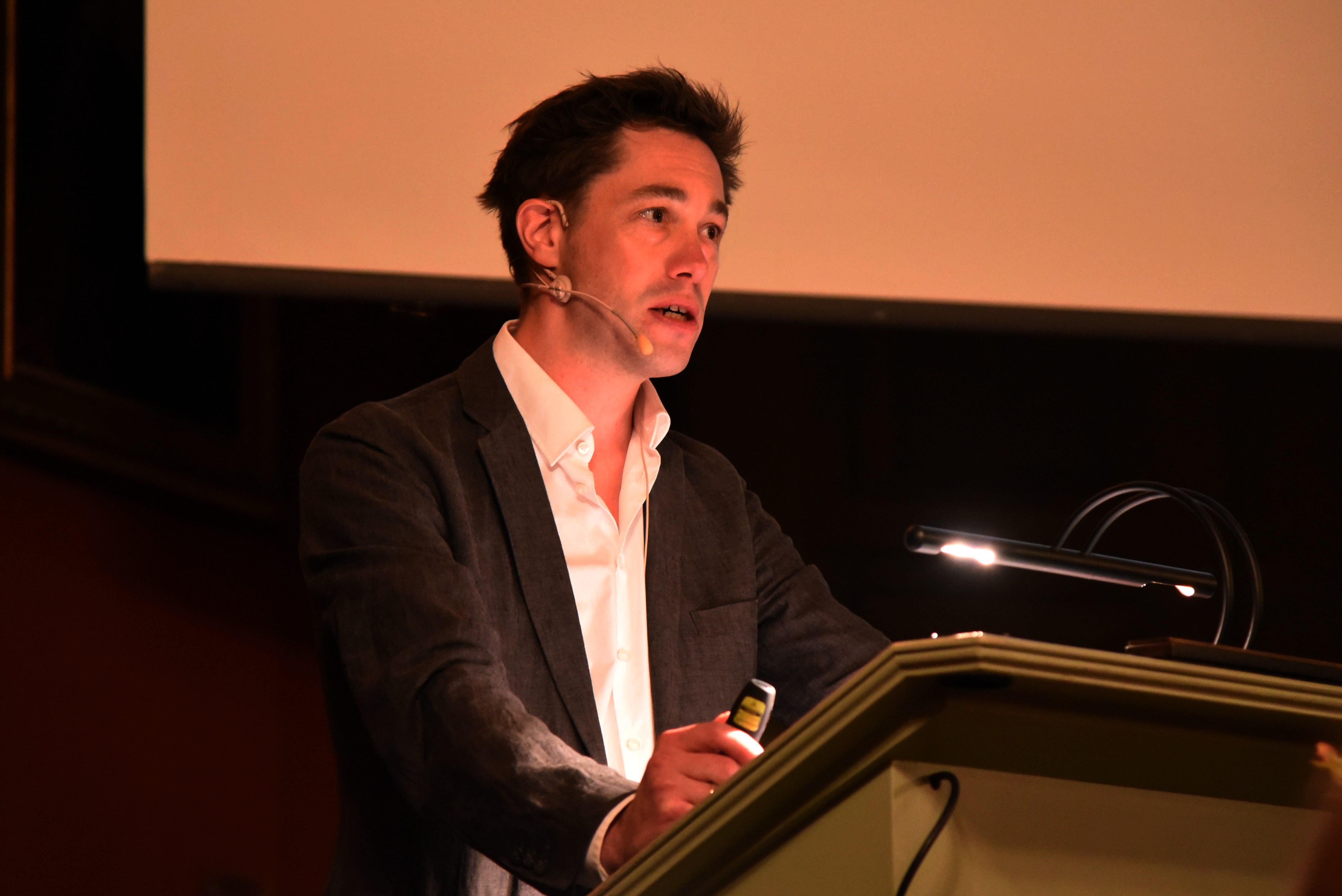
Keynote presentation, photo: Europainstitut
Play by the editors of Zeitschrift
BRUX Theater, Innsbruck, September 2018
"The play "One Hour and a Half in the Life of Ztscrpt" once again shows the protagonists slipping into self-reflexive dark zones and addresses the increasing pressure for representation in all areas of social life.
The play pretends to report on the personal lifes of the editors, reminiscent of Pollesch pieces in slow motion, or all-too-well-known anecdotes from Andy Warhol's Factory, or even worse, the simple plot of a sequel of the TV series "Friends." The interests are increasingly diverging, one of the editors wants to merge the magazine with a street newspaper which she is working for. Another member only wants his own art projects illustrated and presented. The initial joy in conversation and discussion which once united the group has given way to frantic project talk, which is becoming increasingly difficult for some participants due to excessive drug and alcohol consumption and blatant ego-boosting."
Videoextract from the Wrap-up intervention from my perspective as visual artist
Shanghai, November 2017
Presentation of the Artzine as Grusical, Publishing as an Artistic Toolbox: 1989–2017
Mumok, Vienna, December 2017
Wiener Tanz- und Kunstbewegung (Anne Juren / Roland Rauschmeier)
Vienna, November 2017
Deswegen bitte Pünktlich da sein! Gleich zu Beginn des "2nd Thursdays", um 18.00 Uhr, führe ich meine neue Performance inklusive einem Video namens "Where is Europe?" vor. Darin präsentiere ich euch den neuesten Stand meiner Recherche über die Europaplätze und neuen Perspektiven mit einer Prise europäischem Humor und enthemmten Enthusiasmus.
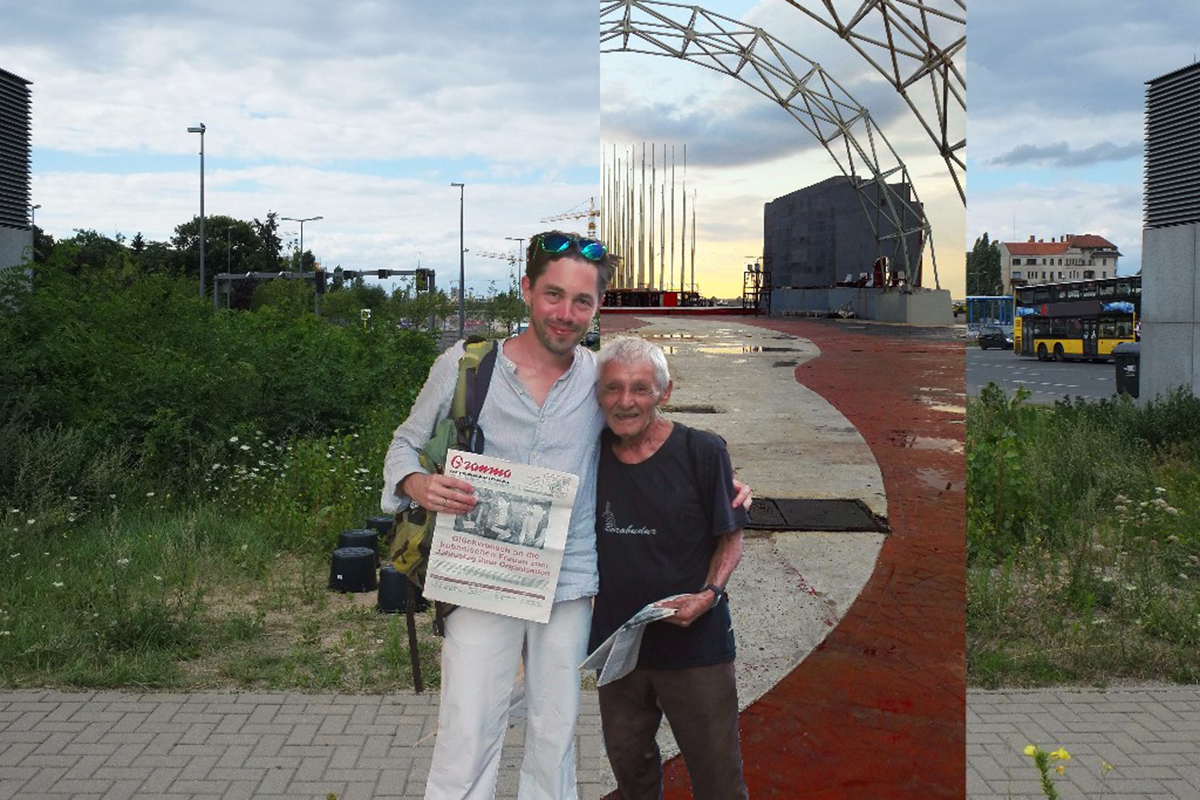
Daneben gibt es eine frisch gedruckte Zusammenarbeit mit Roland Rauschmeier zu begutachten die sich "Heroes for the EU" nennt. Angeblich freuen sich diese auf wilde neofaktische, postkonzeptuelle Auseinandersetzungen mit dem Publikum (meint Yves, A. d. H.).
Die erheizten Gemüter stille ich mit meiner Diashow "Fanzines machen in Cuba", Zigarren, "Cuba Libre" sowie "Ropa Vieja" für die Überlebenden.
Meeting with poets and small publishers
October 2017
The project is to make a public urban art intervention for the next Art Biennial in La Habana, invited by the italian curator Giacomo Zaza and the Centro de Desarrollo de las Artes Visuales (CDAV). This first travel to Cuba is about gathering knowledge, meeting local artists and writers, looking for possible sites, as much as understanding local production facilities in order to plan the intervention.
Research trip supported by Pro Helvetia
roundtable for the show A Tale as A Tool, by Aurélien Gamboni et Sandrine Teixido
Centre de la Photographie, Geneva, September 2017
De la catastrophe du Bumba, aux conditions climatiques extrêmes, en passant par les négligences des politiques urbaines, et la pollution de la baie de Guanabara... les documents sonores collectés par Aurélien Gamboni et Sandrine Teixido dans la région de Niterói (Brésil) témoignent des récits de l'homme face aux changements environnementaux.
Présentation des derniers développements de A Tale as A Tool, suivie d'une table ronde autour de la pratique d'investigation, avec les artistes chercheurs Simon Ripoll-Hurier, Claire Duport, Sylvain Gouraud, Yves Mettler, Axel Meunier.
Videoextract from the lecture performance at the Colloquium BORDERS AND BEYOND:REINVENTING EUROPE, Experiment Europe meeting V
Istituto Svizzero di Roma, June 2017
This lecture starts with a description of my research on urban spaces called "Europe Square". While lecturing, the slideshow gets alive and starts questioning the lecturer. The lecture can be held in English, French and German.
From January 2017 onwards, the conference cycle Experiment Europe hosted at the Swiss Institute in Rome has been taking a closer look at various aspects of Europe, ranging from notions of democracy and challenges in education, research, and innovation to political economy, the current state of welfare and security policy. A lingering sense
of crisis emerged, once again, be it with respect to the European Union as a political project, unresolved economic disparities or, last but not least, rising nationalism as a populist response. In turn, this nal conference of the cycle, entitled Borders and Beyond: Reinventing Europe, will re ect upon alternatives, not in view of easy solutions to commonly accepted problems, but in terms of alternative framings and rede ned priorities.
The conference will open up new perspectives on the lingering crisis of “Experiment Europe,” a task that appears all the more urgent as the crisis is of a multifaceted kind – economic, social, political and philosophical – and gives rise to sharp disagreements among different actors on the direction and scope of European integration itself.
The conference is organized by the Swiss Institute in Rome and the Europa-Institut / Institute for European Global Studies (EIB) at the University of Basel, a leading research centre that investigates Europe from a global, historical and interdisciplinary perspective. The conference is also supported by the Italian Ministry of Cultural Heritage and Activities and Tourism (MIBACT).
Organized by Teresa Pullano, from the Europa Institut Universität Basel
Text about the intervention in the Cité de l'Abreuvoir where I built earth benches with the inhabitants (French), 2016
Tilo Steireif éd., éditions HEPvd, Lausanne, 2016
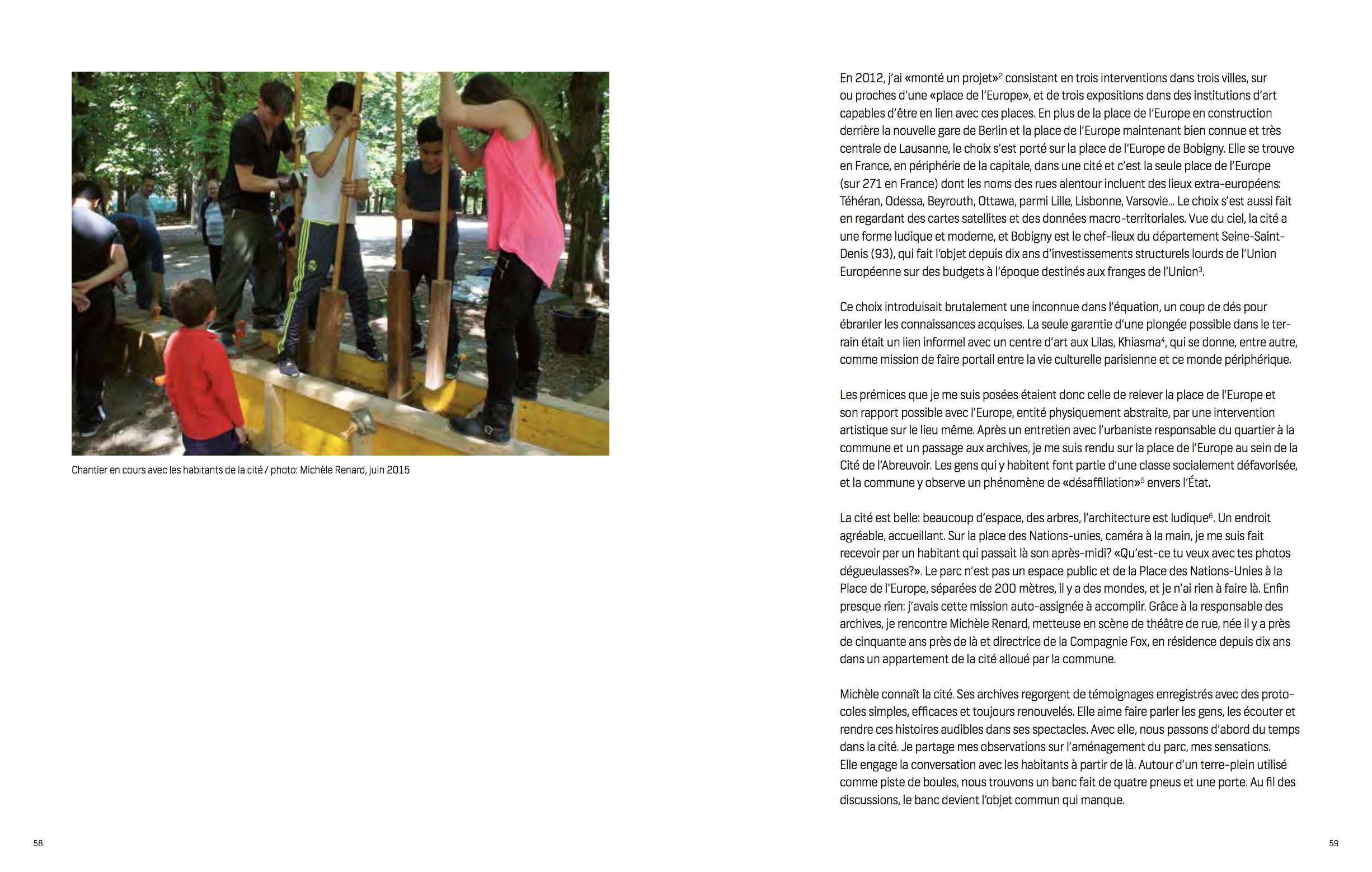
Spread of the magazine
Text for the module of the Affect Residency Programme, coordinated by Paz Ponce
Agora, Berlin, July 2015
The latest approach to city development has insisted on showing and instigating bottom-up processes. Artistic means are getting used to set up situations in which different social groups can express their demands towards decision-makers and get involved in the development of their neighborhood. In Berlin an important protest movement against raising rents and profit-making city development has emerged and made its demand a public affair. However, the process of how city developments are making their way from top-level decision-making down to the asphalt still remains rarely traceable.
This workshop will consist of a multi-headed investigation through artistic means of a new area in the middle of Berlin whose development is currently taking place away from public awareness. Some of the means employed will be: archive research, interviews with the administration, street-mike, jam poetry, photography, street performance, etc. Following an input on urban geography and interventionist art history, we will together create a perceptive mapping of the traces left by different agents of power, ranging from international investment companies and EU's normative governing down to local neighborhood consulting assemblies and anonymous poster actions. The goal is to test, compare and experiment with different means of collection and text and image production in order to follow and connect the multilayered, often remote and multiscalar forces concretely building the city (Neil Brenner, New State Spaces). Invited artists and scholars will help us reflect on the ongoing process.
The study case will be the area historically known as Lehrter Bahnhof, now called Europacity. Since the fall of the Berlin Wall, and with the exception of an endless construction site which became the Hauptbahnhof Berlin, this area has stayed under the radar of city development, allowing several cultural activities to take place in its midst. Since 2005 there is a masterplan for the area, based on an international private-public cooperation project, including the surroundings of the Hamburger Bahnhof, the city's contemporary art venue. The transformations are incremental and strangely remote from public life even though they are unfolding in the middle of the German capital.
Outputs of the workshop will find their way onsite as much as via spreadable documents. Means of mechanical, digital and performative reproduction will be explored and combined, including newspaper distributed in the neighborhood, festive formats like processions and parties and one-night shows.
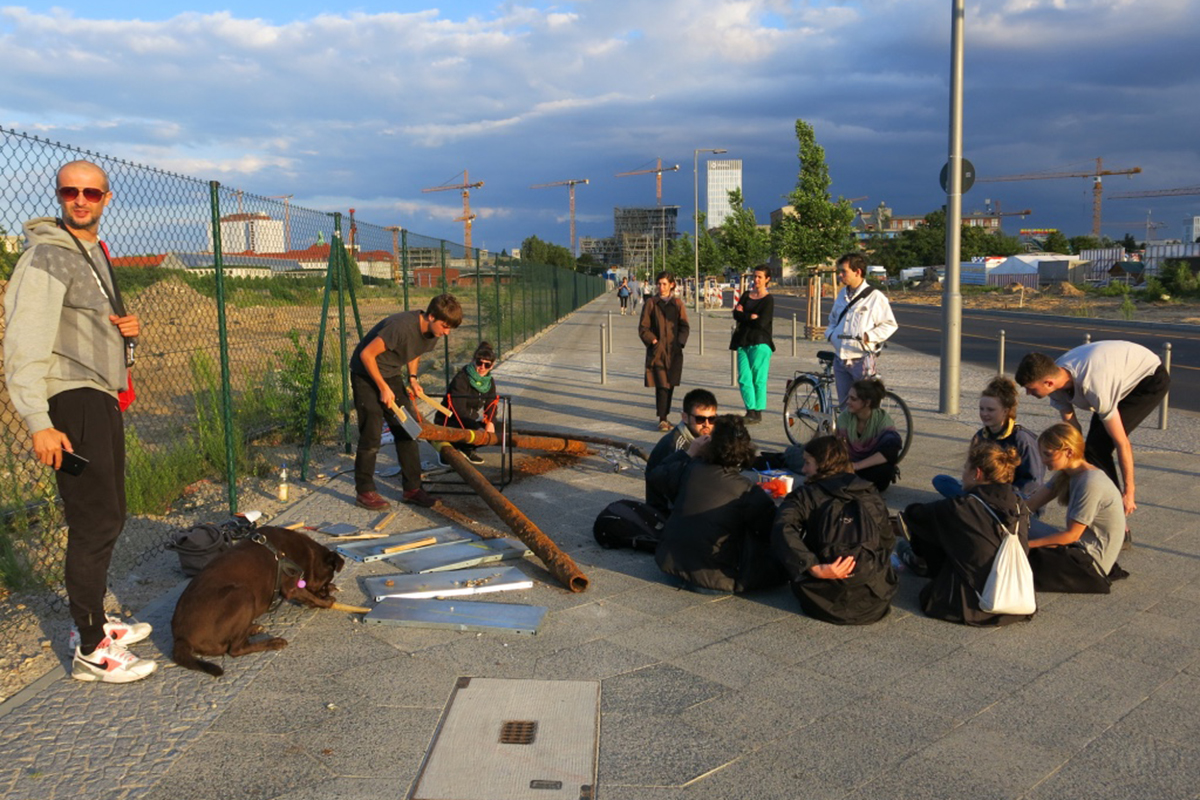
One of the many "stations" on the augmented walk through the future Europacity
